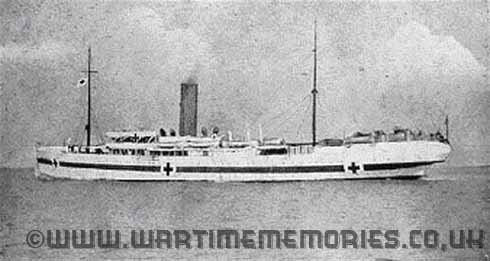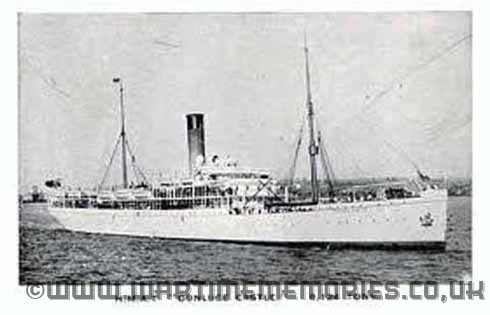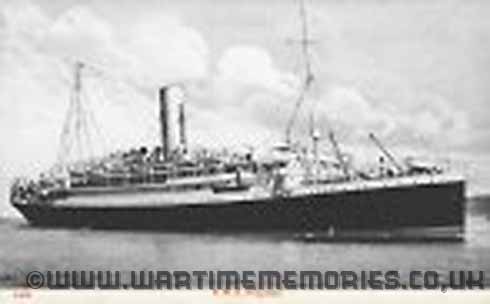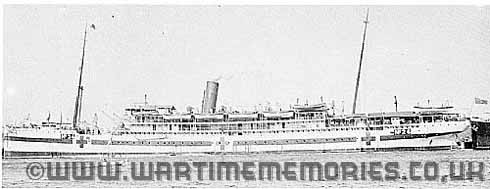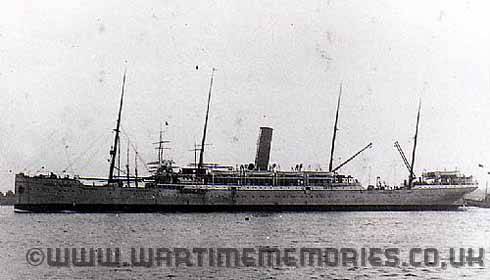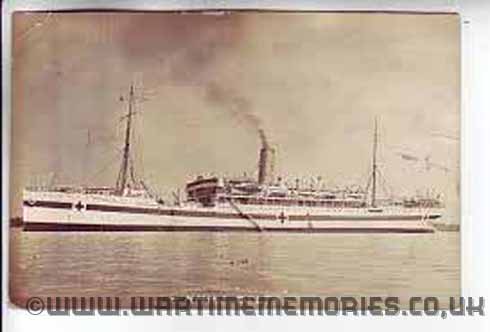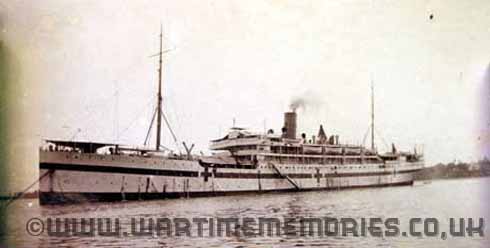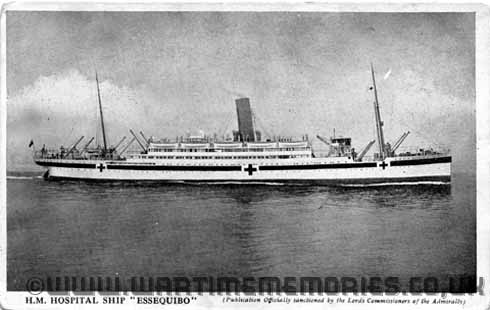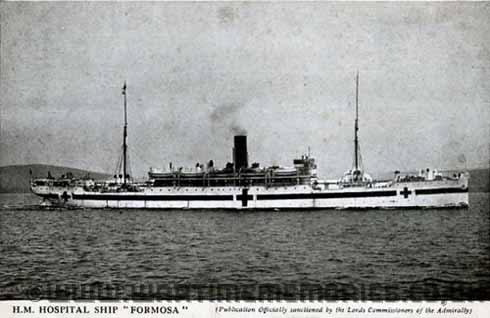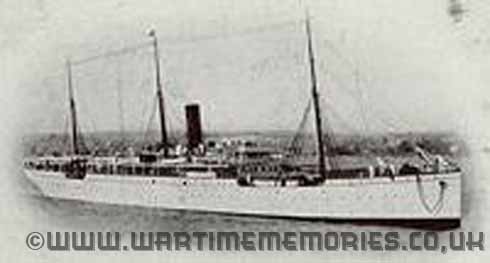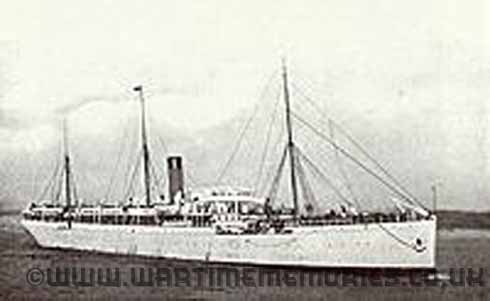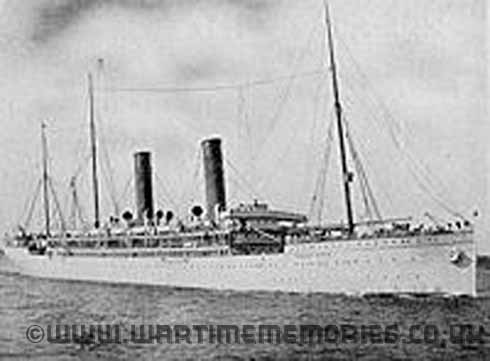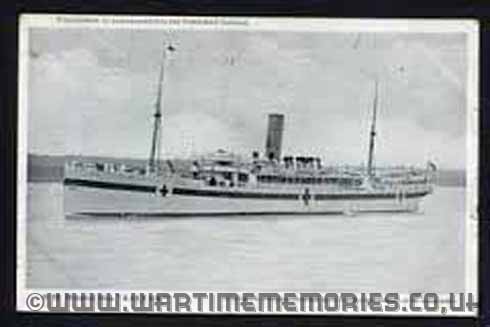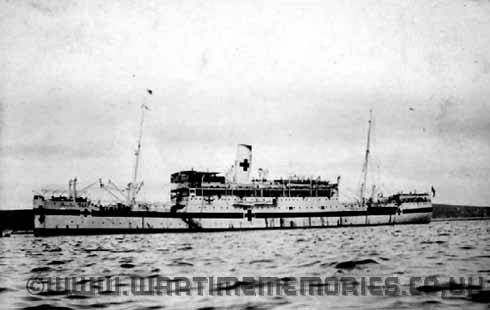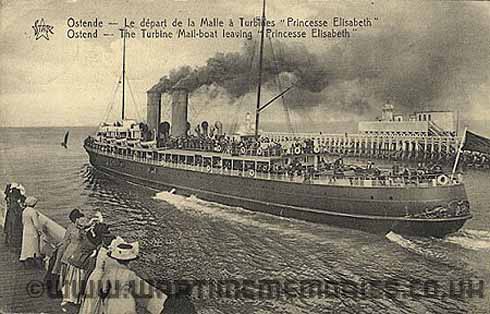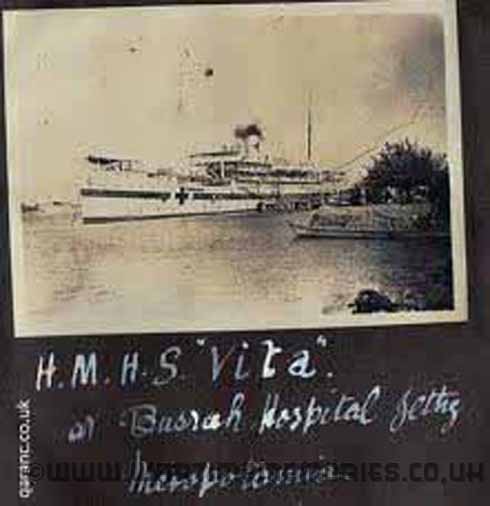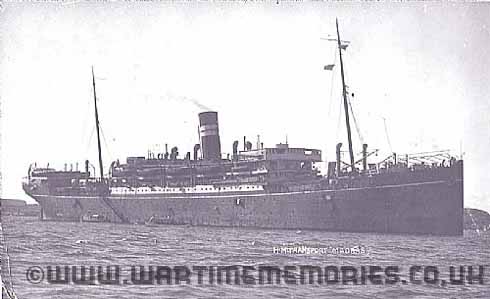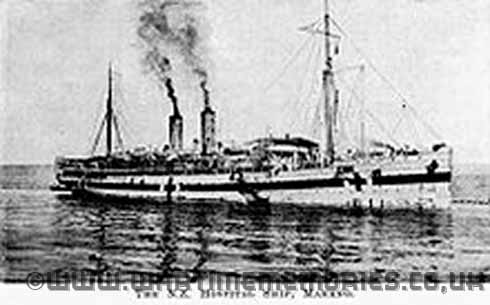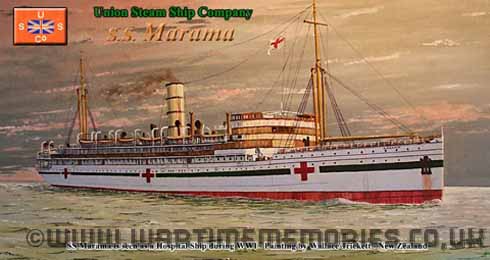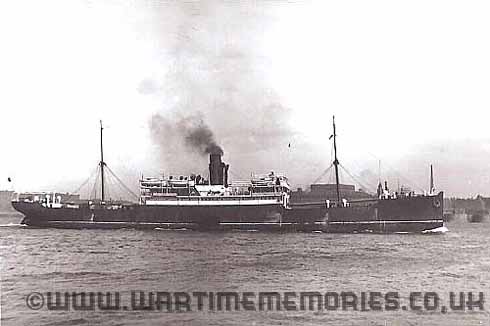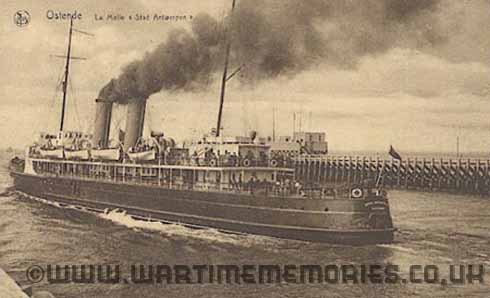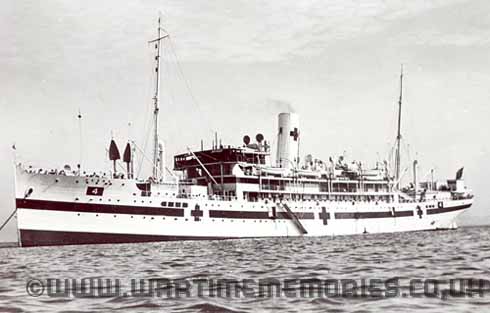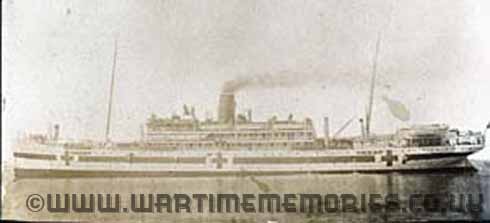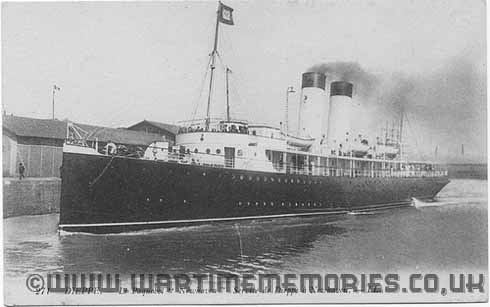|
This website uses cookies. By continuing to use this site you agree to accept cookies. If you enjoy this site please consider making a donation. 
Features Submissions Information |
The Wartime Memories Project - The Great War - Day by Day
1st August 1914
On this day:
- 1st Battalion, King's Shropshire Light Infantry were based at Tipperary with 16th Brigade, 6th Division when war broke out in August 1914. They were mobilsed and returned to England, where 6th Division concentrated near Cambridge for training. They proceeded to France on the 10th of September 1914, landing at St Nazaire. Marched to the Aisne to reinforce the hard-pressed BEF. They moved north to Flanders and were in action at Hooge in 1915. In 1916 they were again in action at Battle of Flers-Courcelette on The Somme, and again in The Battle of Morval and The Battle of Le Transloy, in 1917 they were in action at Hill 70 and Cambrai. In 1918 they saw action in the Battle of St Quentin, The Battles of the Lys, The Advance in Flanders, Battles of the Hindenburg Line and The Pursuit to the Selle. After the Armistice, 6th Division were selected to join the occupation force and they moved into Germany in mid December, being based at Bruehl by Christmas 1918.
- 7th Black Watch The HQ of the 7th (Fife) Battalion, Black Watch was in St Andrews. At the outbreak of war in 1914 they were part of the Black Watch Infantry Brigade and their allocated war station was the Scottish Coastal Defences. A Coy based in Dunfirmline, B Coy in Lochgelly, C Coy in Kirkaldy, D Coy in Cowedendeath, E Coy was from Cupar, Newburgh, Auchtermuchty and Abernethy, F Coy from Leven, Colinsburgh and Largoward, G Coy from St Andrews, Guardbridge, Anstruther and Crail, H Coy was from Leslie, Marckinch and Thornton.
- Australian Troop Transports
RMS Kashgar
Picture from: Clydebuilt Ships Database.
The RMS Kashgar weighed 8,840 tons with an average cruise speed of 15 knots or 27.78 kmph. It was owned by the P & O SN Co, London. Contracted at times to carry Australian troops.
John Doran- Australian Troop Transports
RMS Karmala
The RMS Karmala weighed 8,9479 with an average cruise speed of 15 knots or 27.78 kmph. It was owned by the P & O SN Co, London. Contracted at times to carry Australian troops.
John Doran- Australian Troop Transports
RMS Malwa
Picture from: Clydebuilt Ships Database.
The RMS Malwa weighed 10,883 tons with an average cruise speed of 15 knots or 27.78 kmph. It was owned by the P & O SN Co, London. Contracted at times to carry Australian troops.
John Doran- Australian Troop Transports
RMS Megantic
The RMS Megantic weighed 5,531 tons with an average cruise speed of 15 knots or 27.78 kmph. It was owned by F.Leyland & Co., Liverpool. It was torpedoed and sunk on 10 June 1917. Contracted at times to transport Australian Troops.
John Doran- Australian Troop Transports
RMS Moldovia
Picture from: Clydebuilt Ships Database.
The RMS Moldavia weighed 9,500 tons with an average cruise speed of 18.5 knots or 34.26 kmph. It was owned by the P & O SN Co, London. Contracted at times to transport Australian Troops.
John Doran- Australian Troop Transports
RMS Morea
Picture from: Clydebuilt Ships Database.
The RMS Morea weighed 10,890 tons with an average cruise speed of 16 knots or 29.63 kmph. It was owned by the P & O SN Co, London. Contracted at times to transport Australian Troops. Also served as a hospital ship in WW1.
- Hospital Ship or Ambulance Transport Service during WW1.
- Medical Staff strength.
- Officers:14
- Nurses:21
- Other:63
- Accommodation capacity.
- Officers:59
- Cots:100
- Berths:591
- Period of Service as Hospital Ship or Ambulance Transport.
- Date From:8th October 1915
- Date To:28th March 1916
- Ships Crew details:
John Doran- Australian Troop Transports
RMS Orontes
Picture from: AWM 303744.
The RMS Orontes weighed 9,028 tons with an average cruise speed of 18 knots or 33.33 kmph. It was owned by the P & O SN Co, London. Contracted at times to transport Australian troops.
John Doran- Australian Troop Transports
RMS Osterley
Picture from: Clydebuilt Ships Database.
The RMS Osterley weighed 12,129 tons with an average cruise speed of 18 knots or 33.33 kmph. It was owned by the P & O SN Co, London. Contracted at times to transport Australian troops.
John Doran- Australian Troop Transports
RMS Persia
Picture from: Clydebuilt Ships Database.
The RMS Persia weighed 7,974 tons with an average cruise speed of 18 knots or 33.33 kmph. It was owned by the P & O SN Co, London. Torpedoed and sunk on the 30th December 1915. Contracted at times to transport Australian troops.
John Doran- Australian Troop Transports
SS Balmoral Castle
Picture from: Clydebuilt Ships Database.
The SS Balmoral Castle weighed 13,361 tons with an average cruise speed of 16.5 knots or 30.55 kmph. It was owned by the Union-Castle Mail Steamship Company.
John Doran- Australian Troop Transports
SS Canberra
Picture from: Clydebuilt Ships Database.
The SS Canberra weighed 7,707 tons with an average cruise speed of 16.5 knots or 30.55 kmph. It was owned by the Australian Steamships Ltd (Howard Smith), Melbourne.
John Doran- Australian Troop Transports
SS Carpentaria
Picture from: State Library of Victoria, picture number gr004969.
The SS Carpentaria weighed 5,766 tons with an average cruise speed of 16.5 knots or 30.55 kmph. It was owned by British India Steam Navigation Co. Ltd., Calcutta.
John Doran- Australian Troop Transports
SS City of Karachi
The SS City of Karachi weighed 5,766 tons with an average cruise speed of 16.5 knots or 30.55 kmph. It was owned by Ellerman & Bucknall Steamship Co., London.
John Doran- Australian Troop Transports
SS Dorset
The SS Dorset weighed 7,630 tons with an average cruise speed of 16.5 knots or 30.55 kmph. It was a purpose built refrigeration ship owned by Potter, Trinder & Gwyn, London.
John Doran- Australian Troop Transports
SS Dunluce Castle
SS Dunluce Castle was owned by Royal Mail Line which purchased the former Union Castle line in 1911.used to help transport troops and supplies from Australia during ww1 and also served as a hospital ship at Gallipoli.
John Doran- Australian Troop Transports
SS Ellenga
Pictured at El Mina Wharf, Tripoli, Lebanon, 1919 from: AWM P01122.003.
The SS Ellenga weighed 5,196 tons with an average cruise speed of 16 knots or 29.63 kmph. It was owned by the British India Steam Navigation Company Glasgow & London.
John Doran- Australian Troop Transports
SS Essex
SS Essex from: State Library of Victoria, picture number gr003102, was used to transport troops and supplies from Australia during WW1.
John Doran- Australian Troop Transports
SS Field Marshal
The RPD (Reichspostdampfer - Imperial Mail Steamer) Feldmarschall was originally commissioned in 1903 with the Deutsche Ost-Afrika-Linie (German East Africa Line), Woermann Konsortium, Hamburg, Germany. In 1916 it was captured by the British at Dar es Salaam. It was then operated by Union-Castle Mail SS Co., who renamed it Field Marshal. It was sold in 1922 to a Chinese consortium and renamed Ling Nam. It assisted in passage of troops and supplies from Australia during latter years of WW1.
John Doran- Australian Troop Transports
SS Gaika
SS Gaika from: State Library of Victoria, picture number gr003122, used to transport Troops and Equipment from Australia during WW1.
John Doran- Australian Troop Transports
SS Gracchus
Picture of SS Gracchus Which was used to transport troops and equipment from Australia during WW1. (Also spelt as Graechus ).
John Doran- Australian Troop Transports
SS Hawkes Bay
The Hawkes Bay was built at Sunderland in 1891. It weighed 4,583 tons. It was owned by the Tyser Line (G.D.Tyser & Co.). It was used to transport troops and equipment from Australia during WW1.
John Doran- Australian Troop Transports
SS Indarra
Picture from: Clydebuilt Ships Database.
The SS Indarra weighed 9,735 tons with an average cruise speed of 16.5 knots or 30.55 kmph. It was owned by the Australasian United Steam Nav Co., Fremantle and was used to transport troops and equipment during WW1.
John Doran- Australian Troop Transports
SS Kaiser-i-Hind
Picture from: State Library of Victoria, picture number gr001405.
The SS Kaiser-i-Hind weighed 11,430 tons with an average cruise speed of 18 knots or 33.33 kmph. It was owned by the P & O SN Co, London.
John Doran- Australian Troop Transports
SS Katoomba
Picture of SS Katoomba from: State Library of Victoria, picture number gr007142.
It was used to transport troops and equipment from Australia during WW1.
John Doran- Australian Troop Transports
SS Mahanada
Picture from: Clydebuilt Ships Database.
The SS Mahanada weighed 7,196 tons with an average cruise speed of 12 knots or 22.22 kmph. It was owned by Thos & Jno Brocklebank Ltd., Liverpool.
John Doran- Australian Troop Transports
SS Malta
The SS Malta weighed 6,064 tons with an average cruise speed of 18 knots or 33.33 kmph. It was owned by the P & O SN Co, London.
John Doran- Australian Troop Transports
SS Makarini
Picture from: State Library of NSW, picture number a638277.
The SS Makarini weighed 10,624 tons with an average cruise speed of 13 knots or 24.07 kmph. It was owned by G.D.Tyser & Co, London and had accommodation for 750-steerage class passengers. Built by Workman, Clark & Co, Belfast, she was launched on 3rd February 1912. In 1914 Tyser's was taken over by the Commonwealth & Dominion Line (Port Line) and she was renamed SS Port Nicholson. She was mined and sunk 15 miles West of Dunkirk on the 15th January 1917. Great Passenger Ships of the World by Arnold Kludas, vol.1, ISBN 0-85059-174-0, which contains a photo of the ship. Merchant Fleets by Duncan Haws, vol.21, Port Line.
John Doran- Australian Troop Transports
SS Ormonde
Picture from: Clydebuilt Ships Database.
The SS Ormonde weighed 14,982 tons with an average cruise speed of 18 knots or 33.33 kmph. It was owned by the Orient St Nav Co Ltd, Glasgow.
John Doran- Australian Troop Transports
SS Oxfordshire
SS Oxfordshire was used to transport troops and equipment from Australia during WW1. She also served as a Hospital Ship.
- Hospital Ship or Ambulance Transport Service during WW1.
- Medical Staff strength.
- Officers:6
- Nurses:13
- Other:41
- Accommodation capacity.
- Officers:22
- Cots:216
- Berths:324
- Period of Service as Hospital Ship or Ambulance Transport.
- Date From:15th September 1914
- Date To:24th March 1918
- Ships Crew details:
SS Oxfordshire was built in 1912 by Harland & Wolff at Belfast with a tonnage of 8648grt, a length of 474ft 7in, a beam of 55ft 4in and a service speed of 15.5 knots. Launched on 15th June 1912 and completed on 17th September she was the company's last ship built with a counter stern.
On 2nd August 1914 she was the first ship to be requisitioned for war service two days prior to the outbreak. En-route from Liverpool to London she was off the Isle of Wight and was ordered into Tilbury where she was converted into Naval Hospital Ship No.1 with 562 beds.
Commissioned on 11th August she was sent to Scapa Flow as a base ship on 25th September but proved to be too large for the needs at the time and subsequently moved to the English Channel to undertake army hospital work.
In April 1915 she was deployed as the base hospital ship at Mudros and was present during the ANZAC withdrawal at the Dardenelles, bringing off the wounded in her own boats. The victorious Turks respected the red cross and did not fire on them. She served in the Persian Gulf and German East Africa during December 1916 and in 1918 as a shuttle hospital ship in the English Channel.
Decommissioned on 24th March 1919 she had made 235 voyages, steamed 172,000 miles without a single breakdown and carried 50,000 wounded, the highest of any hospital ship in the war.
She was refurbished and converted to oil burning by her builder in 1920 and resumed commercial services.
On 3rd September 1939 she was requisitioned, once again, for war time service and converted into Hospital Ship No. 6 with 500 beds at the Royal Albert Dock in London. Commissioned on 24th September she left London on 11th November bound for Freetown with 98 medical staff and 177 crew where she served as the base hospital ship. In September 1942 she was redeployed in the Mediterranean. After a refit on the Clyde in 1944 she was sent to the Adriatic where the Army's Anglia had been damaged by mines and on 29th October was herself damaged by a bomb near miss during a voyage between Ancona and Bari.
In November of that year she was sent to the Far East where she served the Admiralty Islands/Philippines and Australia. At one point she was loaned to the U.S. 7th Fleet for use during the taking of Okinawa. After the defeat of Japan in 1945 she was used to repatriate the wounded from Hong Kong and in May 1946 became an Army hospital ship to bring the sick home from the near and Far East. She also repatriated Indian troops from Basra to Bombay as well as making four North Atlantic crossings with refugees. In 1948 she arrived home with troops from Palestine and, on 19th July, was decommissioned at Southampton after carrying 22,321 casualties during the war, again the highest of any hospital ship. On 8th September of that year she made one one more voyage on charter to Jeddah with pilgrims before she was reconditioned by Harland & Wolff at Liverpool.
In April 1949 she made the first sailing for the International Refugee Organisation to Australia with emigrants and in 1950 reverted to trooping duties between Trieste and Port Said. She finished trooping in February 1951 and on 13th April sailed from Liverpool as the Safina-el-Arab having been sold to the Pan-Islamic Steamship Co. of Karachi, their first passenger ship. Deployed on the Karachi - Jeddah Pilgrim service between June and October she spent the remainder of the year operating between Karachi and Chittagong. After 46 years of impeccable service she was broken up at Karachi in 1958.
John Doran- Australian Troop Transports
SS Pakeha
Picture from: State Library of Victoria, picture number bs004061.
The SS Pakeha weighed 4,331 tons with an average cruise speed of 18 knots or 33.33 kmph. It was owned by the Shaw, Savill and Albion Company, London.
John Doran- Australian Troop Transports
SS Ruahine II
Picture from: NZSCo Assn.
The SS Ruahine II [sometimes referred to as SS Rushine in Australian sources] weighed 10,832 tons with an average cruise speed of 18 knots or 33.33 kmph. It was owned by the NZ Shipping Coy, Auckland.
John Doran- Australian Troop Transports
SS Wyreema
Picture from: Clydebuilt Ships Database.
The SS Wyreema weighed 6,926 tons with an average cruise speed of 18 knots or 33.33 kmph. It was owned by the Australasian United Steam Navigation Co, Melbourne.
John Doran- Australian Troop Transports
SS Zealandic
Picture from: State Library of Victoria, picture number bs004070.
The SS Zealandic weighed 8,090 tons with an average cruise speed of 18 knots or 33.33 kmph. It was owned by the White Star Line, London.
John Doran- Australian Troop Transports
SS Port Darwin
Picture of SS Port Darwin from: State Library of Victoria, picture number gr006378. She was used to transport troops and equipment from Australia during WW1.
John Doran- Australian Troop Transports
SS Port Denison
SS Port Denison used to transport Australian troops and equipment during WW1.
John Doran- Australian Troop Transports
SS Port Lyttelton
The SS Port Lyttelton [sometimes referred to as SS Port Lydelton in Australian sources] was formerly the SS Niwaru but requisitioned in 1916 as a troop ship and renamed to SS Port Lyttelton. The ship weighed 6,444 tons with an average cruise speed of 12 knots or 22.22 kmph. It was owned by the Commonwealth & Dominion Line, London.
John Doran- Australian Troop Transports
SS Port Napier
Picture of SS Port Napier from: State Library of NSW, picture number a639252. She was used to transport troops and equipment from Australia during WW1.
John Doran- Hospital ship
HMHS Carisbrooke Castle
The Union Castle Line help mark the transitional benchmarks set by the 1894 Royal Mail Ship Carisbrooke Castle in the steam/sail conversion era. The final single-screw vessel of the line, she was built of steel and carried three masts to supplement her Fairfield Shipbuilding & Engineering Company’s own quadruple-expansion four-cylinder steam engine that put out an amazing nominal 1,490 H.P. and 8,500 indicated horse power. The company had decided to divest the last of their sailing ships, including the original Carisbrooke Castle, a three-masted square-rigger, in 1889.
There were 12 ship’s boats hanging in davits, with the deck rails wrapping the decks. The superstructure has its open bridge where the appropriate instruments were on display. Rising behind and parallel to the fully rigged masts, the red with black accent funnel is stalwart and centrally located. The hull is painted in the company red and gray.
The liner was built in Glasgow by Fairfield’s, and she registered at 7,626 gross tons for her 485 foot length with a 56 foot beam. She had accommodations for 250 First Class Passengers placed amidship rather than at the stern, the first Union Castle Ship so arraigned, and 140 Second Class aft. Her maiden voyage and the subsequent year’s were from London to Cape Town, South Africa. She hit a normal cruising speed of 16 knots, and could reach 17½ knots when pushed. In 1900, with the rest of the line, they became the Union-Castle Line and Carisbrooke Castle moved her home port to Southampton. In 1910 she ran her last Cape Town service, and was relegated to a role as a reserve steamer behind Balmoral Castle.
Four years into reserve service, fate brought the World to war, and the Carisbrooke Castle began again in military duty. Commandeered two days before the formal declaration of war in 1914, she started as a hospital ship with 439 beds, and crossed the English Channel to bring wounded troops home from the Western Front. She shifted roles to that of an Army Troop Ship in the Mediterranean for most of the war. She returned to Union-Castle service in 1919, sailing in Cape mail service until the launch of Union-Castle’s Windsor Castle, and was laid up at Netlev and retired from all duties in 1922.
Hospital Ship or Ambulance Transport Service during WW1.
- Medical Staff strength.
- Officers:
- Nurses:12
- Other:38
- Accommodation capacity.
- Officers:16
- Cots:196
- Berths:227
- Period of Service as Hospital Ship or Ambulance Transport.
- Date From:3rd September 1914
- Date To:26th August 1919
- Ships Crew details:
HMHS Carisbrooke Castle - War Diary Entries for June-December 1917, roughly covering the period that soldiers injured during the Third Battle of Ypres were being shipped home.
The diary does little more than list sailing dates and times, plus the number of patients carried. Sometimes it breaks the figures down into officers and other ranks, but not always. It also shows that on each voyage there were a handful of POWs being taken to England. Based on the figures in the diary, between June-December 1917, HMHS Carisbrook Castle made 38 crossings between Le Havre and Southampton and transported nearly 20,000 wounded officers and men home. Broken down by month, the figures show that October and November were the busiest time - the most crossings and the greatest number of injured.
- Jun: 1 crossing, 358 carried (this may not be wholly accurate as there is only one entry in the diary for June)
- Jul; 4 crossing, 1374 carried
- Aug: 5 crossings, 2808 carried
- Sep: 6 crossings, 2986 carried
- Oct: 8 crossings, 4590 carried
- Nov: 9 crossings, 4919 carried
- Dec: 5 crossings, 2555 carried
John Doran- Hospital ship
HMHS Ceramic
SS Ceramic was an 18,400-ton ocean liner of the White Star Line launched in 1912, and later sold to the Shaw, Savill & Albion Line. In 1942 German submarine U-515 sank the Ceramic, leaving only one survivor from the 656 on board.
Ship history ww1.
Ceramic was built at the Harland and Wolff yard in Belfast. She had seven decks and eight holds and in her original configuration 38% of her cargo capacity was refrigerated. Her total cost was £436,000 and she entered service on 24 July 1913.
She sailed the Liverpool to Australia route after her maiden voyage, then served as a British Hospital and Troopship during World War I, surviving two encounters with enemy submarines. After the war, she returned to her regular run. In 1934, White Star merged with Cunard, and Ceramic was then sold to Shaw, Savill and Albion, but kept the same itinerary. In 1936, Ceramic was given a major reconstruction in Govan, which improved her speed by one knot.
John Doran- Hospital ship
HMHS Dongola
ss Dongola was built by Barclay Curle & Company Glasgow, Yard No 455, Engines by Shipbuilders. Port of Registry: Glasgow. Propulsion: Two quadruple expansion four cylinder steam engines, 8000ihp, twin screws, 15.5 knots. Launched: Thursday, 14/09/1905, Built: 1905. Ship Type: Passenger Liner. Ship's Role: UK/India and Far East mail services, and trooping. Tonnage: 8038 gross; 4723 net; 8165 dwt, Length: 470ft 0in, Breadth: 56ft 3in, Draught: 27ft 8in.
Owner History: Peninsular & Oriental Steam Navigation Company Status: Sold for Scrapping - 23/06/1926
Early History.
- 14/09/1905: Launched for The Peninsular and Oriental Steam Navigation Company, London.
- 10/11/1905: Registered.
- 15/11/1905: Delivered. She cost £160,167. As built she could carry 150 First Class and 100 Second Class passengers.
- 1905: On her maiden voyage she carried Prince Arthur of Connaught and his suite to Colombo en route to conferring the Order of the Garter on the Emperor of Japan.
- 1906: Taken up for seasonal trooping charter, which was repeated every year until 1914, apart from 1911.
- 1907: Made a record Southampton/Bombay journey in 18 days, 7 hours.
- 1911: Present at King George V’s Coronation Navy Review carrying guests of the Admiralty.
- 1911: Indian famine relief duties.
World War One.
- Hospital Ship or Ambulance Transport Service during WW1.
- Medical Staff strength.
- Officers:7
- Nurses:12
- Other:58
- Accommodation capacity.
- Officers:31
- Cots:271
- Berths:204
- Period of Service as Hospital Ship or Ambulance Transport.
- Date From:
- Date To:
- Ships Crew details:
1914: On trooping charter when war declared. 1915: Requisitioned. She operated as a makeshift hospital ship at the Dardanelles and later as transport, largely off the coast of East Africa.
05/03/1915: Collided at 0017 in the Bristol Channel with the anchored Belgian steamer Espagne, having sailed from Avonmouth at 2247 the previous evening. Holed below the waterline forward on the starboard side and beached west of Barry for the leak to be temporarily stopped. Refloated on a rising tide at 0448 am and winched into Barry Dock 3 hours later. 17/03/1915: Left Barry after repairs.
1919: After the Armistice she repatriated deported Russians to Reval, and brought back refugees, before being refitted.
John Doran- Hospital ship
SS Dunvegan Castle (1896)
SS Dunvegan Castle 105854, Year built 1896. Date completed 14/04/1896 Passenger Liner Steel, Screw Steamer built by Fairfield Shipbuilding & Engineering Co Ltd, Govan Fairfield Yard . Tonnage 5958 grt 3428 nrt. Length 450.0 ft. Breadth 50.9 ft. Depth 31.7 ft. Draft 23.7 ft. Engine builder: Fairfield Shipbuilding & Engineering Co Ltd Engine detail: T3cyl (38, 62.5, 102 x 66in), 1152nhp, 1-screw
First owner: Castle Mail Packets Co. Ltd. - D. Currie & Co., London London Subsequent owner and registration history 1900 Union-Castle Mail S.S. Co. Ltd. - same managers 1924 Broken Up at Kiel ... arrived prior to 18/01/1924.
During WW1 she served as a troopship and a makeshift hospital ship in the Dardanelles.
- Hospital Ship or Ambulance Transport Service during WW1.
- Medical Staff strength.
- Officers:9
- Nurses:13
- Other:46
- Accommodation capacity.
- Officers:
- Cots:66
- Berths:334
- Period of Service as Hospital Ship or Ambulance Transport.
- Date From:6th October 1915
- Date To:20th April 1916
- Ships Crew details:
John Doran- Hospital ship
HMHS Grantully Castle
HMHS Grantully Castle was built by Barclay Curle & Company, Glasgow, Scotland. She was Launched: October 11, 1909 and completed: January 1910 Fate: Scrapped at Bowness, Scotland in 1939. Owner: Union-Castle Mail Steamship Company, London, England.
Dimensions, Length: 450' 7" (PP) Beam: 54' 4" Draft: Gross tons: 7,606 Engines: 2 Quadruple expansion Speed: 13 knots Funnels: 1 Masts: 2
World War One>
- Hospital Ship or Ambulance Transport Service during WW1.
- Medical Staff strength.
- Officers:10
- Nurses:15
- Other:59
- Accommodation capacity.
- Officers:18
- Cots:184
- Berths:358
- Period of Service as Hospital Ship or Ambulance Transport.
- Date From:22nd June 1915
- Date To:11th March 1919
- Ships Crew details:
Jan 1915: Used as a troopship. May 1915: Converted into a hospital ship with 552 beds. 11th March 1919: Returned to Union-Castle Line.
John DoranMore info.- Hospital ship
HMHS Jan Breydel
SS Jan Breydel was a Belgian Steam Ship which helped evacuate Belgian government and members of it's Royal Family to Britain during WW1. It was then used as a hospital ship to evacuate wounded from france and Belgium.
Medical Capacity.
- Jan Breydel Medical Staff 2 officers, 1 Warrant Officer 4 Nurses/Sisters and 28 RAMC-Other volunteers
- Accommodation 6 Officers 36 cots and 116 berths.
- Served as hospital ship from 27th Aug 1915 to 1 Aug 1919.
John Doran- Hospital ship
HMHS Neuralia
SS Neuralia was built by Barclay Curle & Company Glasgow, Yard No 497
- Last Name: Neuralia
- Port of Registry: London
- Propulsion: Steam 2 x quadruple expansion
- Launched: Thursday, 12/09/1912
- Built: 1912
- Ship Type: Passenger Cargo Vessel
- Tonnage: 9082 grt
- Length: 499 feet
- Breadth: 58 feet
- Owner History:
- British India Steam Navigation Company, GB
- Status: Sunk - 01/05/1945
Capacity: Passengers: 128 First Class, 98 Second Class. Launched 12th September 1912, completed 18th November 1912. The largest ship in the British India Fleet at this time.
- Hospital Ship or Ambulance Transport Service during WW1.
- Medical Staff strength.
- Officers:11
- Nurses:15
- Other:60
- Accommodation capacity.
- Officers:27
- Cots:245
- Berths:358
- Period of Service as Hospital Ship or Ambulance Transport.
- Date From:12th June 1915
- Date To:31st July 1919
- Ships Crew details:
Sister ship to Nevasa, the pair were most imposing looking ships and were built for the London - Calcutta Service. A difference of opinion follows. Duncan Haws states that she sailed in convoy from Bombay carrying Indian Troops to Marseilles, Laxton and Perry state that she carried British Troops bound for the United Kingdom. She saw action in the Mediterranean in 1915, most notably at Suvla Bay and Salonika as a hospital ship, she then saw service in the Indian Ocean. She returned to the UK in March of 1916 and remained on station with the Home Fleet until September 1918 when she was converted to an ambulance transport and remained as such until July 1919
John Doran- Hospital ship
HMHS Panama
SS Panama/HMHS Maine(Panama)
Originally owned by Pacific Steam Navigation Company as 'Panama', she was built by Fairfield Co. Govan, in 1902 and eventually she was purchased by the Royal Fleet Auxiliary in 1920, and converted in 1921, to become HM Hospital Ship Maine (Panama).
She did not become an official HMHS until after purchase in 1920, but the SS Panama was certainly a Hospital Ship before this as a couple of nurses books printed after WW1 relate to the Panama being present off Gallipoli. She worked in the Mediterranean in 1915.
She had a displacement of 10,100 tons, length 401ft 3in (p.p)., beam 58ft 4in., draught 23ft 6in/34ft deep load with 2 shaft reciprocating triple expansion, 2 x double ended boilers, 2 x single ended boilers, I.H.P. 4,000 (13 knots), with a single funnel.
- Hospital Ship or Ambulance Transport Service during WW1.
- Medical Staff strength.
- Officers:8
- Nurses:10
- Other:58
- Accommodation capacity.
- Officers:19
- Cots:217
- Berths:248
- Period of Service as Hospital Ship or Ambulance Transport.
- Date From:25th July 1915
- Date To:23rd November 1919
- Ships Crew details
John Doran- Ambulance transport
SS Peter de Coninck
SS Pieter de Coninck was built at Cockerill Yard, Hoboken, Belgium in 1910. She weighed 1767grt and was owned by the Belgian Government, operating as a cross channel ferry.
She was converted to serve as an Ambulance Transport during WW1.
- Hospital Ship or Ambulance Transport Service during WW1.
- Medical Staff strength.
- Officers:4
- Nurses:
- Other:26
- Accommodation capacity.
- Officers:19
- Cots:38
- Berths:320
- Period of Service as Hospital Ship or Ambulance Transport.
- Date From:16th March 1917
- Date To:28th March 1919
- Ships Crew details:
John Doran- Hospital ship
SS Somali
SS Somali was built in 1901 by Caird & Company Greenock, Yard No 298.
- Port of Registry: London
- Propulsion: Steam triple exp.
- Launched: Friday, 17/05/1901
- Ship Type: Passenger Cargo Vessel
- Tonnage: 6708 grt, Length: 450 feet, Breadth: 52 feet
- Owner History: Peninsular & Oriental Steam Navigation Company
- Status: Arrived for Scrapping - 10/12/1923
Served at troop carrier and hospital ship for Australians during ww1.
John Doran- Hospital ship
HMHS St. Andrew
SS St Andrew was fourth vessel to operate on the Rosslare - Fishguard service for Great Western Railways. This one was supplied in 1908 by John Brown and Company in Scotland, 2495 grt. and was similar to the ships they had built for the same service in 1906.
She was used as a hospital ship during World War I and took part in the Dunkirk evacuation.
- Hospital Ship or Ambulance Transport Service during WW1
- Medical Staff strength.
- Officers:4
- Nurses :4
- Other :26
- Accommodation capacity.
- Officers:16
- Cots :23
- Berths :155
- Period of Service as Hospital Ship or Ambulance Transport.
- Date From:19th August 1914
- Date To :29th May 1919
- Ships Crew details:
In 1932 she was renamed Fishguard and sold for scrap the following year.
In 1914 she was taken over by the Ministry of Defence and commissioned as a Military Hospital (one of five in the first month of the war). The St Patrick and St David were also converted for use as hospital ships (the St George having been sold the previous year to the Canadian Pacific Railway Co.
Decommissioned in 1919, she was later renamed the MV Fishguard and withdrawn from service in 1933.
John Doran- Hospital ship
Hospital Ship St. David
The Great Western Railway’s ships operated in connection with the company's trains to provide services to Ireland, the Channel Islands and France.[1] Powers were granted by Act of Parliament for the Great Western Railway (GWR) to operate ships in 1871. The following year the company took over the ships operated by Ford and Jackson on the route between Wales and Ireland. Services were operated between Weymouth, the Channel Islands and France on the former Weymouth and Channel Islands Steam Packet Company routes. Smaller GWR vessels were also used as tenders at Plymouth and on ferry routes on the River Severn and River Dart. The railway also operated tugs and other craft at their docks in Wales and South West England
On 30 August 1906 the GWR’s Welsh terminal was moved to a new harbour at Fishguard. It was hoped that transatlantic liners would also call en route to Liverpool but few did, Liverpool being forsaken for Southampton within a few years but this increased the number of liner calls at Plymouth. A similar change saw Rosslare become the principal railway harbour on the other side of Irish Sea although some services were still provided to Waterford. This work was undertaken in a joint venture with the Great Southern and Western Railway of Ireland known as the Fishguard and Rosslare Railways and Harbours.
One of three ships (St. David, St. Patrick and St. George) that started the new Fishguard to Rosslare service in 1906, St. David was built by John Brown. She was used as a hospital ship during World War I. In 1932 she was renamed Rosslare and was sold for scrap the following year.
- Hospital Ship or Ambulance Transport Service during WW1.
- Medical Staff strength.
- Officers:4
- Nurses:4
- Other:26
- Accommodation capacity.
- Officers:14
- Cots:23
- Berths:157
- Period of Service as Hospital Ship or Ambulance Transport.
- Date From:19th August 1914
- Date To:16th January 1919
- Ships Crew details:
John Doran- Hospital ship
HMHS St Patrick
The Great Western Railway’s ships operated in connection with the company's trains to provide services to Ireland, the Channel Islands and France.[1] Powers were granted by Act of Parliament for the Great Western Railway (GWR) to operate ships in 1871. The following year the company took over the ships operated by Ford and Jackson on the route between Wales and Ireland. Services were operated between Weymouth, the Channel Islands and France on the former Weymouth and Channel Islands Steam Packet Company routes. Smaller GWR vessels were also used as tenders at Plymouth and on ferry routes on the River Severn and River Dart. The railway also operated tugs and other craft at their docks in Wales and South West England
On 30 August 1906 the GWR’s Welsh terminal was moved to a new harbour at Fishguard. It was hoped that transatlantic liners would also call en route to Liverpool but few did, Liverpool being forsaken for Southampton within a few years but this increased the number of liner calls at Plymouth. A similar change saw Rosslare become the principal railway harbour on the other side of Irish Sea although some services were still provided to Waterford. This work was undertaken in a joint venture with the Great Southern and Western Railway of Ireland known as the Fishguard and Rosslare Railways and Harbours.
One of three ships (St. David, St. George and St. Patrick) that started the new Fishguard to Rosslare service in 1906, St Patrick, 2531 gnt. was built by John Brown. She was used as a hospital ship during World War I.
- Hospital Ship or Ambulance Transport Service during WW1.
- Medical Staff strength.
- Officers:4
- Nurses:4
- Other:28
- Accommodation capacity.
- Officers:17
- Cots:28
- Berths:146
- Period of Service as Hospital Ship or Ambulance Transport.
- Date From:19th August 1914
- Date To:26th January 1919
- Ships Crew details:
She caught fire while moored at Fishguard on 7 April 1929 and was then sold for scrap the following year after her engines had been transferred to St Andrew (1908).
John Doran- Hospital Ship
HMHS St George
The Great Western Railway’s ships operated in connection with the company's trains to provide services to Ireland, the Channel Islands and France. Powers were granted by Act of Parliament for the Great Western Railway (GWR) to operate ships in 1871. The following year the company took over the ships operated by Ford and Jackson on the route between Wales and Ireland. Services were operated between Weymouth, the Channel Islands and France on the former Weymouth and Channel Islands Steam Packet Company routes. Smaller GWR vessels were also used as tenders at Plymouth and on ferry routes on the River Severn and River Dart. The railway also operated tugs and other craft at their docks in Wales and South West England.
On 30 August 1906 the GWR’s Welsh terminal was moved to a new harbour at Fishguard. It was hoped that transatlantic liners would also call en route to Liverpool but few did, Liverpool being forsaken for Southampton within a few years but this increased the number of liner calls at Plymouth. A similar change saw Rosslare become the principal railway harbour on the other side of Irish Sea although some services were still provided to Waterford. This work was undertaken in a joint venture with the Great Southern and Western Railway of Ireland known as the Fishguard and Rosslare Railways and Harbours.
One of three ships (St. David, St. Patrick and St. George) that started the new Fishguard to Rosslare service in 1906, St George was built by Cammell Laird and Company at Birkenhead.
She was sold in May 1913 to the Canadian Pacific Railway but six years later was sold again to the Great Eastern Railway for use on their services from Harwich.
According to some records she was not used as a hospital ship in ww1 as she was sold to Canadian Pacific Line in 1913, however there are references to her and it seems she was in service as a hospital ship from 1915 to 1917.
- Hospital Ship or Ambulance Transport Service during WW1.
- Medical Staff strength.
- Officers:4
- Nurses:4
- Other:30
- Accommodation capacity.
- Officers:17
- Cots:115
- Berths:146
- Period of Service as Hospital Ship or Ambulance Transport.
- Date From:7th May 1915
- Date To:4th December 1917
- Ships Crew details:
John Doran- Hospital ship
HS Ebani
HMHS Ebani during World War 1. The HMHS Ebani was used as a hospital ship for troops of World War I from the 13th August 1915 to the 12th October 1919. The ship was manned by the Natal Medical Corps (NMC) of South Africa but also carried a British crew (see below).
It was equipped for 300 or 400 patients but could carry 500 patients in an emergency. A table of hospital ships during World War 1 gives the following statistics: 6 British Officers, 13 Nurses and Sisters, 36 RAMC & St Johns Ambulance etc., 508 cots. A plaque at the Merseyside Maritime Museum records that over 5 years it steamed over 200,000 miles and carried 50,000 sick and wounded.
At the outbreak of World War I voluntary workers provided a lot of assistance to the medical authorities. A committee was formed, in Cape Town (South Africa), under Sir Thomas Smartt, to raise funds for the provision of certain auxiliary convalescent hospitals in the South African peninsular for both men and officers. A search was undertaken for a vessel that could be used for hospital purposes only (as opposed to a transport of ambulances). The S.S. Ebani, a cargo vessel, was selected by the Senior Naval Transport Officer, Captain R.C.K. Lambert R.N. and by Colonel Stock to fulfill this purpose.
The Smartt committee chartered the Ebani and converted it into a hospital ship for service in German South-West Africa. It provided the funds and undertook the alterations and fitting out of the Ebani as a hospital ship in accordance with the general specifications prepared by the director of medical services. The ship was equipped as an hospital ship in Cape Town. A staff was selected for the ship, the belligerent Governments were notified, and Lieutenant-Colonel D. Macaulay took over the duties of officer commanding. As the " Ebani " had been a cargo vessel for the West African trade, the decks were not unduly divided, and large airy wards with single-tier swing cots were prepared.
In addition to the fitted accommodation, a reserve of naval swing cots was carried.
The Natal Medical Corps.
The Natal Medical Corps was mobilized in 1914 and served in the South West African Campaign. During the campaign they formed the 6th Stationary Hospital at Swakupmond and manned the Ebani.
The Natal Volunteer Medical Corps (NVMC) was formed on the merger of the Durban Light Infantry, the Natal Mounted Rifles and the Natal Carbineers in 1895. It is now known as the 1 Medical Battalion Group (1 Med).
British crew.
The HMHS Ebani was intended to be a South African hospital ship to serve during the campaign in Africa. However, there is evidence to suggest that there were insufficient South African volunteers to man the ship and British (and possibly other nationals) were required to man the ship.
A protest was lodged in the South African Medical Record on 28 July 1917. It was lodged by Medical Officers serving in German East Africa including Lt Col. D. Macaulay of the HMHS Ebani. The protest was against the number of able bodied and military aged South African men who were stay-at-homers. This meant that the South African units had to be supplemented by men from the R.A.M.C (Royal Army Medical Corp) to make up the numbers.
Where was the HMHS Ebani during World War I?
Drawing together various sources, including diary entries by those aboard the HMHS Ebani, it is believed that the ship was at the following locations on the following dates:
Date Location
- 1914 Cape Town - South Africa
- 1 December 1914 Inaugurations of S.S. Ebani by Vicountess, Buxton Cape Town
- 24 December 1914 Walfish Bay (also written Walvish), Namibia.
- 30 October 1915 Alexandria (Egypt) to UK via Gibraltar.
- 31 October 1915 As above.
- 28 August 1917 Kisiwani Harbour, Tanzania. 29 August 1917 Dar-es-Salaam, Tanzania. 16 May 1918 Lindi to Dar-es-Salaam, Tanzania.
People known to have been aboard the HMHS Ebani[edit]
Sources have shown that the following people were aboard the HMHS Ebani during its sail as an hospital ship as either crew or patients:
- Private John Thomas of the South Wales Borderers - wounded at Gallipoli in September 1915.
- Dr Donald Macaulay M.B C.M. (In medical charge of the Ebani until 1917). (Ross-shire).
- Nurse A. Hills Hospital in Alexandria and Ebani between November 1915 and February 1916 mentioned in dispatches December 1915 and March 1916 and recipient of the Royal Red Cross for which her attendance was requested at Buckingham Palace.
- Nurse Dorah Bernstein from Johannesburg, nursed GSWA, Salonika, Gallipoli, Egypt, France and UK and served on hospital ship Ebani.
- Nurse Margaret Blackmore (see anecdotes below) of Tilt Cove, enlisted not long after the outbreak of war and served on the Ebani in the East African Campaign and in the Mediterranean with the ship making one trip to England to refit and repair.
- Mr. Alex Stephens treated aboard the HMHS Ebani for wounds suffered whilst serving in the South Africa Army against the Germans in East Africa (see anecdotes below).
- Private Hurbett Everett Treated aboard the HMHS Ebani in 1915 (see anecdotes below).
- Mr. William Hickman Smith of Dunston, Gateshead, England, served aboard the HMHS Ebani as a nurse (see anecdotes below).
- Owen Jones Soldier of the Royal Welsh Fusiliers Owen landed at Gallipoli on 9 August 1915 but succumbed to dysentery. He was admitted into the 2 Welsh Field Ambulance on 29 September 1915. On 4 October 1915 he was transferred to the 21st General Hospital at Alexandria until 30 October when he was invalided back to the UK on HMHS Ebani.
- Dan Fewster A First World War British Army Battery Sergeant whose journals about his experiences in German East Africa give us some dates and locations for the HMHS Ebani.
- Arthur Beagle - of Hull, Yorkshire Mechanical Transport and South African Horse 1st Mounted Brigade. From the diary of Mr. Beagle we know about the whereabouts of the HMHS Ebani in May 1918 and about a small pox outbreak upon the ship.
- E. L. De Reeder - was residing in South Africa in 1916. Volunteered for active service in German East Africa as a motor dispatch rider; was rejected, being only sixteen years old. In Sept., 1917, enlisted in the South African Medical Corps, and was transferred for duty to No. 1 General Hospital, Wynberg, Cape Town, where, after one year's service as secretary to the officer commanding, was promoted to corporal. After nearly two and a half year's service ¦was discharged on request and sailed for England as wardmaster on the H. M. Hospital Ship Ebani and transferred for U. S. A.
The following crew members of the HMHS Ebani are mentioned in the London Gazette of Tuesday 3 June 1915 (presumably in despatches):
- Downs, Chief Offr. A., H.M.H:S. " Ebani."
- Faill, Master Mariner A., Master of H.M.H.S, "Ebani."
- Lumsden, 'Chief Engr. W., H.M.H.S," Ebani.".
Anecdotes mentioning the HMHS Ebani[edit]
The following sources have been discovered mentioning the HMHS Ebani:
Love on the HMHS Ebani.
On 11 May 1918 Nurse Margaret Blackmore married Mr. Alex Stephens (a mining engineer) whom she had met whilst serving on the Ebani where he was treated for wounds he had suffered whilst serving in the South African Army against the Germans in East Africa. They were married in South Africa on 11 May 1918.
Encounter with a submarine off Gibraltar.
On 31 October 1915 Private Hurbett Everett described in his diary how they saw a submarine (demon of the deep) sink a cargo boat just a few miles from them. The submarine allowed them to take on the sunken ships crew. It also spared them. Private Everett believes that it was the red cross on the Ebani that saved them.
Dr. Donald Macaulay erroneously awarded the O.B.E.
A record was discovered for a Dr Donald Macaulay (captain) stating that his medals were withheld because he would not return the insignia of the O.B.E (Order of the British Empire) that was erroneously awarded to him it may have been meant for Lt Col. D. Macaulay.
A Stamp of defiance?
Mr. William Hickman Smith served aboard the HMHS Ebani as a nurse during World War I. After the war he kept a coin with the insignia of the R.A.M.C. (Royal Army Medical Corp) and the HMHS Ebani on one side. On the other side is the picture of Kaiser Wilhem II (Guilelmus II Imperator). It is believed that the original coin was most likely to be a German East Africa (DOA -Deutsch Ostafrika) 1 Rupee featuring German (DR) emperor Wilhelm II (1888-1918) which should weigh 11.6638 grams and would contain .3437 of an ounce of silver. There were 300,000 of these coins minted in Hamburg in 1913. What was German East Africa during World War I was a German colonial territory covering the modern-day countries of Tanzania, Rwanda and Burundi.
We know from the records that the Ebani spent time in Tanzania (see above). This is probably where and when the coin originated. How it came to be stamped with the Ebani stamp we can only guess but apparently it is not uncommon for coins of the opposition to be defaced during war.
Journal Extracts of Dan Fewster.
The Journal extracts of Dan Fewster, a World War I British Army Battery Sergeant give us the following extracts mentioning the HMHS Ebani.
August 28. 1917 - The MO will not keep me here, so I am transferred to the HS Ebani for Dar-es-Salaam. During the five weeks that I was in dock at Kilwa, my appetite was very poor and during the four days that I have been on this ship, I have hardly tasted food, although it looked very nice.
August 29. 1917 - We arrived at Dar-es-Salaam this morning, and I am removed to No.2 South African General Hospital, formerly the Kaiseroff Hotel. I am now a stretcher case, so I dont improve much. After being examined by the MO, I am marked for the south.
Extracts from the Diary of Arthur Beagle Small Pox on the HMHS Ebani.
Extracts from the Diary of Arthur Beagle from Hull, Yorkshire, of the South African Horse 1st Mounted Brigade we know a little about the whereabouts of the HMHS Ebani in May 1918 and about an outbreak of small pox on the ship. His diary states:
3 May [1918] - I am still in hospital although removed to Lindi by river boat. I am feeling pleased today as the M. O. is evacuating me. It is now a matter of waiting for the hospital ship.
May 16 [1918] - Arrived at Dares salaam on the hospital ship Ebani and admitted to hospital. Small pox broke out on the ship and all of us were vaccinated. (450 miles).
After World War I.
The HMHS Ebani served as an hospital ship until October 1919.
Following the end of the German South-West African campaign the H.M.H.S. Ebani was transferred to Imperial authorities. It continued to be used in various locations. Any staff of the South African Medical Corps who remained on board following the transfer were themselves transferred to the Royal Army Medical Corps (R.A.M.C.). It was sold in 1938 to Italy and renamed the Maristella. A third boat by the name of Ebani was built in 1952.
John Doran- Royal Yacht
HMY Alexandra
HM Yacht Alexandra was built by A & J Inglis Pointhouse Glasgow, Yard No 280. Engines by Parsons Marine Steam Turbine. Last Name: PRINS OLAV (1925) Propulsion: Two steam turbines, 3 Yarrow boilers 4500 ihp Speed:18.86 knots Launched: Thursday, 30/05/1907. Built: 1907, Ship Type: Royal Yacht Ship's Role: Royal yacht then cruise ship. Tonnage: 2113 grt. Length: 295.3ft. Breadth: 40.1ft. Draught: 13 ft. Owner History: Admiralty ( H.M. King Edward VII ). 1925: Det Nordenfjeldske DS. 1940: Norwegian authorities. Status: Bombed & Sunk - 09/06/1940
Remarks: Sold to Norwegian Shipping Company 1925 for use as cruise ship Prince Olav. Subsequently rebuilt as a Hurtigruten service vessel Sunk by German air attack on the 9th June 1940 in 67.07N 01.00E on passage Kagsund for Thorshavn, Faroes.
In her service as a royal yacht, Alexandra was manned by the Royal Navy. The ship often carried Edward VII on holidays to Biarritz and the Mediterranean, or to Germany. During the First World War Alexandra was used as a hospital ship. Following the First World War, Alexandra was rarely used, and was decommissioned in June 1922.
John Doran- Hospital ship
HS Empress of India
RMS Empress of India was an ocean liner built in 1890-1891 by Naval Construction & Armament Co., Barrow, England for Canadian Pacific Steamships. This ship would be the first of two CP vessels to be named Empress of India, and on 28 April 1891, she was the very first of many ships named Empress arriving at Vancouver harbor.
The Empress of India regularly traversed the trans-Pacific route between the west coast of Canada and the Far East until she was sold to the Maharajah of Gwalior in 1914 and renamed Loyalty in 1915.
In 1891, Canadian Pacific Railway (CPR) and the British government reached agreement on a contract for subsidized mail service between Britain and Hong Kong via Canada; and the route began to be serviced by three specially designed ocean liners. Each of these three vessels was given an Imperial name.
The RMS Empress of India and her two running mates - the RMS Empress of China and the RMS Empress of Japan - created a flexible foundation for the CPR trans-Pacific fleet which would ply this route for the next half century.
The Empress of India was built by Naval Construction & Armament Co. (now absorbed into Vickers Armstrongs) at Barrow, England. The keel was laid in 1890. She was launched on 30 August 1890 by Lady Louise Egerton, sister of Lord Harrington. The 5,905-ton vessel had a length of 455.6 feet, and her beam was 51.2 feet. The graceful white-painted, clipper-bowed ship had two buff-colored funnels with a band of black paint at the top, three lightweight schooner-type masts, and an average speed of 16-knots. This Empress and her running mate Empresses were the first vessels in the Pacific to have twin propellers with reciprocating engines. The ship was designed to provide accommodation for 770 passengers (120 first class, 50 second class and 600 steerage).
The SS Empress of India left Liverpool on 8 February 1891 on her maiden voyage via Suez to Hong Kong and Vancouver. Thereafter, she regularly sailed back and forth along the Hong Kong - Shanghai - Nagasaki - Kobe - Yokohama - Vancouver route. In the early days of wireless telegraphy, the call sign established for the "Empress of India was "MPI"
Much of what would have been construed as ordinary, even unremarkable during this period was an inextricable part of the ship's history. In the conventional course of trans-Pacific traffic, the ship was sometimes held in quarantine, as when it was discovered that a passenger from Hong Kong to Kobe showed signs of smallpox, and the vessel was held in Yokohama port until the incubation period for the disease had passed. The cargo holds of the Empress would have been routinely examined in the normal course of harbor-master's business in Hong Kong, Yokohama or Vancouver.
On 17 August 1903, the Empress of India collided with and sank the Chinese cruiser Huang Tai.
The vessel was reported sold on 19 December 1914, to the Geakwar of Baroda (also known as the Maharajah of Gwalior). The former Empress was re-fitted as a hospital ship for Indian troops. On 19 January 1915, the ship was renamed Loyalty. In March 1919, she was sold to The Scindia Steam Navigation Company Ltd. Company in Bombay (now Mumbai). In February 1923, the ship was sold for scrapping at Bombay.
John Doran- Hospital ship
St. Denis (Munich)
SS Munich was built by John Brown Clydebank, Yard No 384. Last Name: BARBARA (1940). Previous Names: ST DENIS (1915). Launched: Tuesday, 25/08/1908, Built: 1908, Ship Type: Passenger Ferry Ship's Role: Harwich/Hook of Holland ferry.
Tonnage: 2570 grt. Length: 331 ft. Breadth: 43.2 ft.
- Owner History:
- Great Eastern Railway Company, Harwich
- 1923 London & North Eastern Railway Co.
- 1940 German Navy
- 1945 Allied control at Kiel
Status: Arrived for Scrapping - 02/03/1950
- Converted to hospital ship 1914 for WW1.
- Troop transport 1939, scuttled at Rotterdam 12/5/1940, refloated by Germans 1/11/1940
- Intended conversion to minelayer but not done due to state of machinery
- Used by Allies as accommodation ship at Kiel to 1949
- Broken up at Sunderland. Names: Munich (Great Eastern Raiilways): 1908-1914. St Denis (Great Eastern Railways): 1918-1922. St Denis (LNER: 1923-1940).
Munich was built in 1908 for the Harwich-Hook of Holland service. In WW1 she was used as the hospital ship St Denis, retaining the name afterwards. In 1940 she was caught in Amsterdam, and was scuttled. She was raised and used by the Germans, and was scrapped in 1950.
- Hospital Ship or Ambulance Transport Service during WW1.
- Medical Staff strength.
- Officers:4
- Nurses:6
- Other:28
- Accommodation capacity.
- Officers:14
- Cots:108
- Berths:109
- Period of Service as Hospital Ship or Ambulance Transport.
- Date From:12th October 1914
- Date To:18th October 1919
- Ships Crew details:
John Doran- Hospital ship
HMHS Brighton
Brighton was a 1,384 GRT steamship which was built in 1903 for the London, Brighton and South Coast Railway and London and South Western Railway. She passed to the Southern Railway on 1 January 1923. In 1930, she was sold to W E Guinness and converted to a private yacht, Roussalka (named after Slavonic mythologic creature). She was wrecked at Killary Bay on 25 August 1933.
The ship was built by W Denny & Bros, Dumbarton. She was yard number 683 and was launched on 13 June 1903 with completion in August 1903. The ship was 273 feet 6 inches (83.36 m) long, with a beam of 34 feet 2 inches (10.41 m) and a depth of 14 feet 1 inch (4.29 m). She was powered by three steam turbines, which were made by Parsons Steam Turbine Co Ltd, Newcastle upon Tyne. The turbines were rated at 580 horsepower (430 kW) and drove three screws. These could propel her at a speed of 21 knots (39 km/h).
In 1931, Roussalka was fitted with two 8-cylinder Atlas diesel engines of 1,750 horsepower (1,300 kW) driving a single screw, giving her a speed of 15.5 knots (28.7 km/h).
History.
Brighton was built for the London, Brighton and South Coast Railway. She was used on their Newhaven - Dieppe route. She was to have been the first turbine powered steamship built for the LB & SCR but a fire at the shipbuilders delayed her completion, pushing her into second place. Her port of registry was Newhaven. On 5 November 1910 Brighton was involved in a collision with the windjammer Preußen 8 nautical miles (15 km) south of Newhaven. Brighton returned to Newhaven to summon aid, and the tug Alert was sent to assist Preußen, which was towed towards Dover. It was intended to anchor her off Dover but both anchor chains broke and Preußen was driven onto rocks where she sank as a result of the damage inflicted on her. The Master of the Brighton was found to be responsible for the accident and lost his licence as a result. He later committed suicide by shooting himself in a London pub.
- Hospital Ship or Ambulance Transport Service during WW1.
- Medical Staff strength.
- Officers:4
- Nurses:4
- Other:26
- Accommodation capacity.
- Officers:6
- Cots:20
- Berths:114
- Period of Service as Hospital Ship or Ambulance Transport.
- Date From:18th March 1915
- Date To:15th May 1920
- Ships Crew details:
In 1914, Brighton was requisitioned by the Royal Navy for use as a troopship. She was later used as a hospital ship. On 19 December 1914, she rescued the survivors of the naval trawler HMT Orianda, which had been sunk by a mine in the North Sea off Scarborough, Yorkshire. Brighton brought the American President Woodrow Wilson back to Dover after the signing on the Treaty of Versailles.
Brighton was returned to her owners in 1920. Brighton passed to the Southern Railway at Grouping. In 1930, Brighton was sold to W E Guinness, who converted her to a private yacht named Roussalka. Her steam turbines were replaced by a diesel engine and one of her two funnels was removed. She was renamed Roussalka. On 25 August 1933, in thick fog, Roussalka was wrecked on Blood Slate Rock, Freaklin Island, Killary Bay. All passengers and crew were rescued.
John Doran- Hospital ship
HMHS Syria
SS Syria was built by Alexander Stephen & Sons Glasgow,Yard No 391, Engines by Shipbuilder. Last Name: GIOVANNA (1924)- only for last journey for scrapping. Port of Registry: London
Propulsion: Steam triple exp. 2 x 3cyl twin screws 4500ihp. Speed 14 knots. Launched: Tuesday, 07/05/1901, Built: 1901, Ship Type: Passenger Cargo Vessel.
Tonnage: 6660 grt. Length: 450 feet. Breadth: 52 feet. Owner History: Peninsular & Oriental Steam Navigation Company London Status: Sold for Scrapping - 24/06/1924
Remarks: Served as a Hospital Ship from 2/10/1914 to 10/2/1920 and was used in Mesopotamia. Scrapped at La Spezia, renamed Giovanna for delivery voyage only.
- Hospital Ship or Ambulance Transport Service during WW1.
- Medical Staff strength.
- Officers:16
- Nurses:
- Other:62
- Accommodation capacity.
- Officers:12
- Cots:109
- Berths:214
- Period of Service as Hospital Ship or Ambulance Transport.
- Date From:2nd October 1914
- Date To:10th February 1920
- Ships Crew details:
John Doran- Hospital ship
HMHS Dieppe
Dieppe was a steam passenger ferry that was built in 1905 for the London, Brighton and South Coast Railway. She was requisitioned during the First World War for use as a troopship and later as a hospital ship HMHS Dieppe, returning to her owners postwar. She passed to the Southern Railway on 1 January 1923. In 1933 she was sold to W E Guinness and converted to a private diesel yacht, Rosaura. She was requisitioned in the Second World War for use as an armed boarding vessel, HMS Rosaura. She struck a mine and sank off Tobruk, Libya on 18 March 1941.
SS Dieppe was built by Fairfield Shipbuilding & Engineering Co Ltd, Govan. She was yard number 439 and was launched on 6 April 1905 with completion in May 1905. The ship was 273 feet 5 inches (83.34 m) long, with a beam of 34 feet 8 inches (10.57 m) and a depth of 13 feet 8 inches (4.17 m). She was powered by three steam turbines, which were made by Fairfield. The turbines could propel her at a speed of 22 knots (41 km/h). When converted to a private yacht, the turbines were replaced by two 8-cylinder Atlas diesel engines. One of her propellers was removed as was one of her funnels. Her speed was reduced to 15 knots (28 km/h). As built, her GRT was 1,210. This had increased to 1,426 by 1930 and further increased to 1,536 in 1933.
History.
Dieppe was built for the London, Brighton and South Coast Railway. She was used on their Newhaven — Dieppe route. She was requisitioned by the Royal Navy in the First World War for use as a troopship and a hospital ship. On 27 February 1916 she took aboard over 100 survivors from the 12,431 GRT P&O passenger liner Maloja, which was sunk by a mine off Dover.
- Hospital Ship or Ambulance Transport Service during WW1.
- Medical Staff strength.
- Officers:3
- Nurses:4
- Other:27
- Accommodation capacity.
- Officers:
- Cots:33
- Berths:134
- Period of Service as Hospital Ship or Ambulance Transport.
- Date From:6th May 1915
- Date To:7th April 1917
- Ships Crew details:
Dieppe was returned to her owners after the war and passed to the Southern Railway at 1923 grouping. On 27 November 1924 Dieppe had a mishap in which she ended up hitting the breakwater at Newhaven Harbour stern first. The tugs Alert and Richmere were sent to her aid. Richmere became disabled when a cable became entangled around her propellor. The Newhaven Lifeboat Sir Fitzroy Clayton was sent to her aid. Richmere ended up being dashed against the harbour wall and sank. Her crew were rescued by the lifeboat and the tug was later raised and repaired. Dieppe managed to dock some five hours after the drama began.
In September 1933, Dieppe was sold to W E Guinness for conversion to a private yacht. She was renamed Rosaura, replacing MY Roussalka which had been lost earlier that year. In August 1934, the Prince of Wales and Wallis Simpson took a cruise on Rosaura. According to Wallis, it was on this cruise that she fell in love with the Prince. Also in 1934, Winston Churchill and his wife Clementine cruised on Rosaura in the eastern Mediterranean. On 26 September 1936, Rosaura was in collision with the Dutch coaster Henca at Amsterdam, Netherlands and was severely damaged. She was subsequently repaired.
Rosaura was requisitioned by the Royal Navy in the Second World War for use as an armed boarding vessel in the Contraband Control Service. In February 1940, Rosaura was involved in Operation Abstention. On 18 March 1941 Rosaura struck a mine off Tobruk and sank with the loss of 78 lives.
John Doran- Hospital ship
HMHS Egypt
SS Egypt was a passenger liner that sunk after a collision with the Seine, on 20 May 1922 in the English Channel. 252 people were rescued from the 338 passengers and crew on board at the time. A subsequent salvage operation recovered most of the cargo of gold and silver.
Name: SS Egypt, Owner and Operator: P&O Port of registry: London, UK. Route: London-Bombay.
Builder: Caird & Co. Launched: 1897. Out of service: 20 May 1922. Fate: Sank after collision.
Tonnage: 7,941 grt. Length: 500 ft (150 m). Propulsion: Steam engine Speed: Cruising: 15 kn (28 km/h; 17 mph). Max: 18 kn (33 km/h; 21 mph) Capacity: 301 first class, 208 second class, Crew: 294
The Egypt was built at Greenock on the River Clyde and launched in 1897. She generally worked on the United Kingdom to India route but served as a hospital ship during the First World War.
- Hospital Ship or Ambulance Transport Service during WW1.
- Medical Staff strength.
- Officers:12
- Nurses:10
- Other:58
- Accommodation capacity.
- Officers:20
- Cots:175
- Berths:266
- Period of Service as Hospital Ship or Ambulance Transport.
- Date From:2nd August 1915
- Date To:1st June 1919
- Ships Crew details:
The Final Voyage.
Egypt departed from Tilbury, Essex on 19 May 1922 carrying just 44 passengers as well as a cargo of gold and silver bullion and gold sovereigns worth over £1 million (around £200 million at the 2012 gold price).
The voyage proceeded normally until the early morning of the 20 May when fog was encountered. As a safety measure Captain Collyer greatly reduced the speed of the ship. The Egypt remained in fog until the afternoon when the navigator was able to sight landmarks on the French coast and fix the ship's position.
After continuing the voyage for several hours a dense fog bank was suddenly encountered at around 7 o'clock. The engines were stopped but almost immediately afterwards a fog whistle was heard. A ship emerged through the fog and within seconds the other ship (the Seine) crashed into the port side of the Egypt. The Seine had a strengthened bow for ice-breaking and this penetrated deeply into the Egypt before the ships drifted apart.
An SOS was transmitted and replies were received from the RMS Andes and SS Cahiracon but the Egypt sank in less than 20 minutes before either ship arrived.Most of the passengers and crew were able to abandon ship in the lifeboats which were picked up by the Seine.
The Salvage.
With such a valuable cargo salvage attempts soon began but the wreck of the Egypt was not located until 1930. She was found to be lying upright in a depth of 170 metres (560 ft) making the recovery extremely difficult with the technology of the time. Giovanni Quaglia (From the Genoese company "Società Ricuperi Marittimi" (So.Ri.Ma.)) was in charge of the operation and decided to use a diver in an armoured suit to direct the placing of explosives to blast through the ship to expose the strong room. The diver was then used to direct a grab which picked up the gold and silver. The salvage continued until 1935 by which 98% of the contents of the strong room had been recovered
John Doran- Hospital ship
HS Erinpura
SS Erinpura was a passenger liner built for the British-India Steam Navigation Company in 1911. She was the first British India ship built for Eastern service to be fitted with radio. She was sunk in the Mediterranean during World War II.
Class & type: Passenger cargo vessel, Tonnage: 5,128 grt. Length: 411 ft (125.27 m), Beam: 52 ft 6 in (16.00 m), Draught: 23 ft 5 in (7.14 m). Installed power: Two sets of triple expansion engines, 6,657 IHP Propulsion: Twin screws. Speed: 16.7 knots (30.9 km/h).
Capacity: Passengers: 51 first class, 39 second class, 2,359 deck. Crew: 26 Officers, 84 Ratings.
Construction and First World War.
Erinpura was built by William Denny and Brothers, of Dumbarton and launched in 1911. She was one of seven sisters built at four different shipyards for the Bay of Bengal/Singapore Straits Service, the group which was one of the most successful, profitable and long lasting groups in the history of British India. She was used as a troopship early in the First World War, carrying troops from Karachi to Marseilles, and then to Sanniya in Iraq. She ran aground while sailing up the river to Abadan on 24 December 1914 and sustained some damage, but was able to return to Bombay. She made several more trooping voyages until becoming a hospital ship in August 1915, supporting the Indian Expeditionary Force with 475 beds and 104 medical staff. She served on the Basra-Bombay Service, and from November 1917 was used as an ambulance transport.
- Hospital Ship or Ambulance Transport Service during WW1.
- Medical Staff strength.
- Officers:
- Nurses:
- Other:
- Accommodation capacity.
- Officers:
- Cots:
- Berths:475
- Period of Service as Hospital Ship or Ambulance Transport.
- Date From:1st May 1916
- Date To:13th June 1919
- Ships Crew details: Officers:26 Ratings:84
Interwar.
She ran aground again on 15 June 1919, this time on the Mushejera Reef in the Red Sea. Her passengers and troops were taken off by HMS Topaze and taken to Aden, but attempts to pull Erinpura off failed. It was eventually decided to cut the bow of the ship off, towing the stern to Aden, and leaving the bow stuck on the reef. A new bow was ordered from the original builders Dennys. The stern was towed to Bombay where the new bow section was fitted, and she returned to service in 1923.
Second World War.
She was called up during the Munich Crisis in 1938, and was requisitioned for the Liner Division in March 1940. Erinpura was used as a troop transport in the Mediterranean, and in 1943 was the commodore's ship, under the command of Captain P.V. Cotter, in a Malta-bound convoy with three other British India ships, Karoa, Egra and Rohna, and twenty other merchantmen escorted by eleven warships. The convoy was attacked thirty miles north of Benghazi on 1 May 1943 by German bombers, with Erinpura being hit by a bomb in one of her holds. She sank within four minutes of being hit. Two junior engineers, 54 Indian seamen, three gunners, 140 Palestinian Jewish soldiers serving in 462 Transport Company of the British Army, and 600 Basuto pioneer troops were lost with her.
Memorial.
There is a memorial on Mount Herzl to the 140 Jewish soldiers who drowned aboard the SS Erinpura. The monument is shaped like a ship containing a central pool, on the bottom of which are the names of the fallen. Above the pool is a turret adorned with the Hebrew text of Psalms 68:22: "The Lord said, I will bring again from Bashan, I will bring my people again from the depths of the sea." A memorial ceremony is held every year on Yom HaShoah
John Doran- Hospital ship
HS France
SS France was a French ocean liner which sailed for the Compagnie Générale Transatlantique, colloquially known as CGT or the "French Line". She was later christened Versailles of the Atlantic, a reference to her décor which reflected the famous palace outside Paris. Ordered in 1908, she was introduced into the Transatlantic route in April 1912, just a week after the sinking of RMS Titanic, and was the only French liner among the famous "four stackers". France quickly became one of the most popular ships in the Atlantic. Serving as a hospital ship during World War I, France would have a career spanning two decades. Her overall success encouraged CGT to create even larger liners in the future.
Name: SS France, Owner: Compagnie Générale Transatlantique (CGT). Port of registry: France, Le Havre, Route: Transatlantic. Ordered: 1908 Builder: Chantiers de l'Atlantique, Laid down: February 1909, Launched: 20 September 1910. Commissioned: 1912, Decommissioned: 1936. Maiden voyage: 20 April 1912. Out of service: 1935. Nickname: Versailles of the Atlantic Fate: Broken up in 1936.
General characteristics
Tonnage: 24,666 grt. Length: 217 m (712 ft), Beam: 23.88 m (78.3 ft). Propulsion: Four direct-action steam turbines; Quadruple propeller; 45,000 ihp (34,000 kW). Speed: 23.50 knots (43.52 km/h; 27.04 mph). Capacity: 2,020 passengers.
France was called the most lavish of the Transatlantic liners and its interiors were one of the most consistent of all liners. The revival of the Baroque architecture and interior design occurred in the late 19th century and prevailed into the early decades of the twentieth.
Her first class accommodations were graced with various portraits of Louis XIV as well as his relations. France was also credited for bringing the grand staircase to the ocean liner, a fashion which prevails in modern cruise ships. Her First Class entrance hall and dining room demonstrated this. The staircase in the dining room was in fact copied from the Parisian Hôtel de Toulouse. Further unique points included her Cafe Terrasse and the Salon Mauresque, the latter a reference to the French colonial empire in Africa. The ship also had a gymnasium, an elevator as well as a hair salon, all great novelties at the time. Style Louis seize (Louis XVI) was also used within the private apartments of the grand luxe suites on board. According to a 1912 booklet publicising the liner, her second class accommodation was credited as "match[ing] the richness and comfort of first class on the old liners." Passengers in this class could also utilise a hair dressing salon. Third and steerage classes were also praised as being well-appointed.
The 1910s.
Built at Chantiers de l'Atlantique,[4] she was launched 20 September 1910 into the River Loire. The spectacle was watched by scores of cheering Frenchmen who had gathered for the occasion. In the following months, her machinery was installed and her luxurious interiors were fitted. Finally completed in 1912, her maiden voyage departed from her homeport of Le Havre on 20 April 1912, just five days after the sinking of Titanic. As a result of the disaster, France lost much publicity but quickly established herself on her route. She did much to improve the image of the CGT which, to date, had not had much influence in the North Atlantic. Cuisine onboard was said to have been amongst the finest at sea. Sailing at a service speed of 23.5 knots (43.5 km/h), she was faster than any ship afloat save for Mauretania and Lusitania. Despite this, she attained a speed of 25.09 knots (46.47 km/h) on her trials. At 23,769 tons, France was half the size of the newest British liners, such as the Olympic but what she lacked in size, she made up for in opulence. Her first class interiors were amongst the most lavish seen at sea and were decorated in style Louis quatorze earning the nickname Château or Versailles of the Atlantic.
Proud of their great achievement, the new France was not without problems; she suffered from disturbing vibrations, and had a marked tendency to roll, even when the seas were flat calm. She was withdrawn from service after just a handful of crossings to have these two serious issues addressed. She was sent to the Harland & Wolff Shipyard in Northern Ireland, where longer and wider bilge keels were fitted to her hull to reduce rolling and new propellers were fitted to reduce vibrations, making her not only more comfortable to travel aboard, but faster as well.
When World War I erupted in 1914, France was immediately requisitioned by the French Navy for use as an armed merchant cruiser and renamed France IV. Her time as a cruiser was short-lived as she was too large, burned too much coal to be of good use, and was consequently reconfigured to carry troops. Later still, in 1916 she was painted white and used as a hospital ship in the Dardanelles, operating in tandem with White Star’s new flagship, Britannic and Cunard's new Aquitania. During her time as a hospital ship she was converted to have 2,500 beds for injured troops. When Britannic was sunk in late 1916, the need for high-capacity hospital ships was even more dire, and she continued in this role until the United States entered the war in 1917, when she was deployed back to the Atlantic to ferry American troops to the continent with space for some 5,000. In 1918, her military service was cut short by an engine room explosion that killed nine crew members and thus required extensive repairs.
The 1920s.
Returned to the CGT in March 1919, her name was promptly changed back to France, although she was kept busy repatriating American troops until that autumn. She was sent for refurbishment that winter, returning to commercial duty in early 1920. In 1921, she passed flagship status on to the newer and larger Paris, but continued to be a popular means of travel, with a near club-like following among the wealthy. Her affluent passenger loads swayed the CGT in 1924 to convert her to an all first-class ship, save for just 150 third class berths. During the conversion, her boilers were modified to burn fuel oil rather than coal, allowing her engine room staff to be greatly reduced. She sailed without incident, crossing the Atlantic during the peak months and cruising in the winter until 1927. With the advent of the new Ile de France, France was diverted almost totally to cruising.
The Great Depression essentially sounded the death knell for the liner. Many of the millionaires she had carried over the years had been financially destroyed and the general downturn in business cut deeply into transatlantic travel. France spent more and more time idle, until she finally was withdrawn from service in 1932. Laid up at Le Havre, she sat unattended until January 1933, when a fire was discovered by a night watchman. Although it was rapidly extinguished, the fire had caused some minor damage, but by now she was outclassed by her newer running-mates. CGT had by then commissioned a new flagship, the great Normandie which was nearing completion. As a result, the company decided it was time to scrap the 21-year-old liner. On 15 April 1935, the old France departed Le Havre under her own steam to the scrappers at Dunkirk, France
John Doran- Hospital ship
HS Liberty
Names: Liberty (1908-1912), Glencairn (1912-1914), Liberty (1914-1938).
Owners and details.
- Joseph Pulitzer (1908-1911)
- James Ross (1912-1914)
- Lord Tredegar (1914-1920)
- Sir Robert Houston (1920-1926)
- Lady Lucy Houston (1926-1936)
- Port of registry: USA (1908-1912) USA
- Portsmouth (1912-1924) United Kingdom
- Jersey (1924-1938) United Kingdom
- Builder: Ramage & Ferguson Ltd, Leith[1]
- Cost: US$1.5 million
- Launched: 5 December 1907[1]
- In service: 1908[1]
- Out of service: 1938
- Fate: scrapped
General characteristics
- Type: Steam Yacht
- Tonnage: 1,607grt, 887nrt
- Length: 268.6 ft (81.9 m),Beam: 35.6 ft (10.9 m), Depth of hold: 17.9 ft (5.5 m).
- Propulsion: twin screw
SY Liberty was a steam yacht built for Joseph Pulitzer and one of the largest private yachts of its day. She served as a Royal Navy hospital ship during World War I. Strangely, two of her five owners died on board.
The steam yacht Liberty was designed by G L Watson & Co and launched by Ramage & Ferguson Ltd at Leith on 5 December 1907. With a tonnage of 1,607grt, length of 268.6 feet (81.9 m) and beam of 35.6 feet (10.9 m), she was a large yacht by the standards of the day. She had twin screws, powered by two triple expansion steam engines made by the shipbuilder.
In addition to the expected high level of luxury, Liberty was especially fitted with ramps and soundproofing due to Pulitzer's blindness and extreme sensitivity to noise, and was nicknamed "The Tower of Silence".
History
Liberty was built in 1908 at a cost of US$1.5 million for newspaper publisher Joseph Pulitzer, who died on board at Charleston, South Carolina on 29 October 1911. She was sold to Scottish-Canadian businessman James Ross, renamed Glencairn and registered in Portsmouth, England. Ross sailed around the world in her in 1912, hoping to improve his health, but died the following year. In 1914 she was purchased by Viscount Tredegar, who reverted her name to the original Liberty.
In September 1915 she was requisitioned by the Royal Navy for the duration of World War I, initially as an auxiliary patrol yacht Liberty IV, though soon transformed to a hospital ship, No. 10, first operating within the North Sea and for much of the time under the command of her owner. She was returned to Lord Tredegar in January 1919.
After refitting Liberty as a yacht, Viscount Tredegar embarked on a world cruise, eventually going around the world twice, during which time he visited every colony in the British Empire, but then sold her to the shipping magnate Sir Robert Houston in 1920. Following his marriage in 1924, Houston moved his residence to Jersey for tax reasons and also re-registered his yacht there. Like Pulitzer, he died on board the yacht, on 14 April 1926.
Left in his will to his wife Lucy, Lady Houston, she lived aboard Liberty much of the time. In the 1930s, to express her hatred for former prime minister Ramsay MacDonald, she hung a huge electric sign "Down with MacDonald the Traitor" in the rigging and sailed round the British Isles in her.
John Doran- Hospital and Troopship WW1
HMHS Mauretania
RMS Mauretania was an ocean liner designed by Leonard Peskett and built by Swan, Hunter & Wigham Richardson for the British Cunard Line, and launched on 20 September 1907. She was the world's largest ship until the launch of the RMS Olympic in 1911 as well as the fastest until the launch of the Bremen in 1929. Mauretania became a favourite among her passengers. After capturing the Blue Riband for the fastest transatlantic crossing during her 1909 inaugural season, Mauretania held the speed record for twenty years.
The ship's name was taken from Mauretania, an ancient Roman province on the northwest African coast, not the modern Mauritania which is now to the south. Similar nomenclature was also employed by Mauretania's running mate, Lusitania, which was named after the Roman province directly north of Mauretania, across the Strait of Gibraltar, the region that now is Portugal.
Ship Statistics.
- Tonnage: 31,938 gross register tons (GRT)
- Length: 790 ft (240.8 m)
- Beam: 88 ft (26.8 m)
- Draft: 33 ft (10.1 m)
- Installed power: Direct-action Parsons steam turbines (two high pressure, two low pressure)
- 68,000 SHP (shaft horsepower) nominal at launch, 76,000 SHP on record run, later increased to 90,000 SHP after conversion to oil burning
- Propulsion: Quadruple propeller installation triple bladed design at launch changed soon after to four bladed versions. Astern turbines available on inboard shafts only.
- Speed: 24 knots (46 km/h) designed service speed
- Capacity: 2165 passengers total: 563 first class, 464 second class, 1138 third class. Crew: 802
Mauretania and Lusitania were both designed by Cunard naval architect Leonard Peskett with Swan Hunter and John Brown working from the plans for an ocean greyhound with a stipulated service speed of twenty-four knots in moderate weather for her mail subsidy contract. Peskett's original configuration for the ships in 1903 was a three-funnel design, when reciprocating engines were destined to be the powerplant. A giant model of the ships in this configuration appeared in Shipbuilder's magazine. Cunard in 1904 decided to change power plants to Parson's new turbine technology and Peskett then added a fourth funnel to the ship's profile as the ships design was again modified before construction of the vessel finally began.
In 1906, Mauretania was launched by the Duchess of Roxburghe. At the time of her launch, she was the largest moving structure ever built and slightly larger in gross tonnage than Lusitania. The main visual differences between Mauretania and Lusitania was that Mauretania was five feet longer and had different vents (Mauretania had cowl vents and Lusitania had oil drum-shaped vents). Mauretania also had two extra stages of turbine blades in her forward turbines making her slightly faster than the Lusitania. Mauretania and Lusitania were the only ships with direct-drive steam turbines to hold the Blue Riband; in later ships, reduction-geared turbines were mainly used. Mauretania's usage of the steam turbine was the largest yet application of the then-new technology, developed by Charles Algernon Parsons. During speed trials, these engines caused significant vibration at high speeds; in response, Mauretania received strengthening members and redesigned propellers before entering service, which reduced vibration.
Mauretania was designed to suit Edwardian tastes. Its interior was designed by Harold Peto, architect, and was fitted out by several London companies, with twenty eight different types of wood used in her public rooms, along with marble, tapestries, and other furnishings. Wood panelling for her first class public rooms was meticulously carved by three hundred craftsmen from Palestine. The multi-level first-class dining saloon was decorated in Francis I style and topped by a large dome skylight. A series of elevators, then a rare new feature for liners, was installed next to Mauretania's grand staircase. A new feature was the Verandah Café on the boat deck, where passengers were served beverages in a weather-protected environment.
Early career.
Mauretania departed Liverpool on her maiden voyage on 16 November 1907 under the command of her first captain, John Pritchard and later that month captured the record for the fastest eastbound crossing of the Atlantic with an average speed of 23.69 knots (43.87 km/h). In September 1909, Mauretania captured the Blue Riband for the fastest westbound crossing — a record that was to stand for more than two decades. In December 1910 Mauretania broke loose from her moorings while in the River Mersey and sustained damage that caused the cancellation of her special speedy Christmas voyage to New York. In a quick change of events Cunard rescheduled Mauretania's voyage for Lusitania under the command of captain James Charles which had just returned from New York. Lusitania herself completed Christmas crossings for Mauretania, carrying revellers back to New York. In 1912 both King George and Queen Mary were given a special tour of Mauretania, then Britain's fastest merchant vessel, adding further distinction to the ship's reputation. On 26 January 1914, while Mauretania was in the middle of annual refit in Liverpool, four men were killed and six injured when a gas cylinder exploded while they were working on one of her steam turbines. The damage was minimal and she returned to service two months later.
World War I.
Shortly after Great Britain declared war on Germany on 4 August 1914, Mauretania and Aquitania were requested by the British government to become armed merchant cruisers, but their huge size and massive fuel consumption made them unsuitable for the duty and they resumed their civilian service on 11 August. Later, due to lack of passengers crossing the Atlantic, Mauretania was laid up in Liverpool until May 1915 at the time that the Lusitania was sunk by a German U-boat.
Mauretania was about to fill the void left by Lusitania, but she was ordered by the British government to serve as a troopship to carry British troops during the Gallipoli Campaign. She avoided becoming prey for German U-boats because of her high speed and the seamanship of her crew. As a troopship, Mauretania received dazzle camouflage, a form of abstract colour scheming, in an effort to confuse enemy ships.
HMHS Mauretania.
- Hospital Ship or Ambulance Transport Service during WW1.
- Medical Staff strength.
- Officers:22
- Nurses:21
- Other:177
- Accommodation capacity.
- Officers:115
- Cots:592
- Berths:1238
- Period of Service as Hospital Ship or Ambulance Transport.
- Date From:22nd October 1915
- Date To:1st March 1916
- Ships Crew details:
When combined forces from the British empire and France began to suffer heavy casualties, Mauretania was ordered to serve as a hospital ship, along with her fellow Cunarder Aquitania and White Star's Britannic, to treat the wounded until 25 January 1916. In medical service the vessel was painted white with large medical cross emblems surrounding the vessel. Seven months later, Mauretania once again became a troop ship when requisitioned by the Canadian government to carry Canadian troops from Halifax to Liverpool. Her war duty was not yet over when the United States declared war on Germany in 1917, and she carried thousands of American troops, the ship was known by the Admiralty as HMS Tuberose until the end of the war, but the vessel's name was never changed by Cunard.
Post-war career.
Mauretania returned to civilian service on 21 September 1919. Her busy sailing schedule prevented her from having an extensive overhaul scheduled in 1920. However, in 1921 Cunard Line removed her from service when fire broke out on E deck and decided to give her a much needed overhaul. She returned to the Tyne shipyard of her birth, where her boilers were converted to oil firing and returned to service in March 1922. Cunard noticed that Mauretania struggled to maintain her regular Atlantic service speed. Although the ship's service speed had improved and it now burned only 750 short tons (680 t) of oil per 24 hours, compared to 1,000 short tons (910 t) of coal previously, it was not operating at her pre-war service speeds. On one crossing in 1922 the ship managed an average speed of only nineteen knots. Cunard decided that the ship's once revolutionary turbines were in desperate need of an overhaul. In 1923, a major re-fitting was begun in Southampton. Mauretania's turbines were dismantled. Halfway through the overhaul, the shipyard workers went on strike and the work was halted, so Cunard had the ship towed to Cherbourg, France where the work was completed at another shipyard. In May 1924, the ship returned to Atlantic service.
John Doran- Hospital ship
HS Cambria
TSS Cambria was a twin screw steamer passenger vessel operated by the London and North Western Railway from 1897 to 1923.
Ship Statistics.
History.
- Name: 1897-1919: TSS Cambria, 1919-1925: TSS Arvonia.
- Owner: 1897-1923: London and North Western Railway.
- 1923-1925: London, Midland and Scottish Railway.
- Operator: 1897-1925: London and North Western Railway.
- 1923-1925: London, Midland and Scottish Railway.
- Port of registry: United Kingdom
- Route: 1902-1923: Holyhead, Dublin
- 1923-1925: Holyhead to Greenore and Heysham to Douglas
- Builder: William Denny and Brothers, Dumbarton
- Yard number: 574
- Launched: 4 August 1897
- Out of service: 11 June 1925
- Fate: Scrapped
- General characteristics
- Tonnage: 1,842 gross register tons (GRT)
- Length: 329 ft (100 m)
- Beam: 39.1 ft (11.9 m)
- Speed: 21 knots
She was built by William Denny and Brothers of Dumbarton for the London and North Western Railway in 1897 in response to the competition launched by the City of Dublin Steam Packet Company who had launched a steamer in 1896 capable of 24 knots and a Holyhead to Dublin crossing time of 2¾ hours.
She was requisitioned by the Admiralty as an Armed boarding steamer in 1914 and became a hospital ship after August 1915.
- Hospital Ship or Ambulance Transport Service during WW1.
- Medical Staff strength.
- Officers:3
- Nurses:4
- Other:29
- Accommodation capacity.
- Officers:
- Cots:31
- Berths:158
- Period of Service as Hospital Ship or Ambulance Transport.
- Date From:8th August 1915
- Date To:20th January 1919
- Ships Crew details:
She was renamed TSS Arvonia in 1919. In August 1922 she was again requisitioned as a troopship, this time by the Irish Free State along with the SS Lady Wicklow.
In 1925 she was scrapped.
John Doran- Hospital and Troopship WW1
HMHS Western Australia
SS Western Australia served as a Troopship and Hospital Ship during WW1
John Doran- Hospital ship
HS Dunluce Castle
See also HMAT Dunluce Castle.
A passenger - cargo ship of 8114grt, built in 1904 for the Union Castle line. Served as a troopship and Hospital Ship in WW1.
- Hospital Ship or Ambulance Transport Service during WW1.
- Medical Staff strength.
- Officers:10
- Nurses:16
- Other:74
- Accommodation capacity.
- Officers:52
- Cots:223
- Berths:480
- Period of Service as Hospital Ship or Ambulance Transport.
- Date From:6th July 1915
- Date To:2nd april 1919
- Ships Crew details:
John Doran- Hospital ship
HS Araguaya
SS Araguaya (b 1906) was later renamed ss Kraljica Marija (1930) when sold to Jugoslavenski Lloyd a.d., Zagreb, Yugoslavia.
The British liner Araguaya was built in 1906 for Royal Mail’s service to South America. Her Yugoslav buyers of 1930, Jugoslavenski Lloyd, were engaged in the same South American trade with cargo ships. Renamed Kraljica Marija, this was Jugoslavenski’s first passenger ship. In 1935 also the Ebro, renamed Princeza Olga, was bought from England. With these ships Jugoslavenski entered the Mediterranean cruise market. When war spread over Europe, the party was over and they were sold. However, there are strong indications that by selling them their owners mainly wanted to prevent them from coming to enemy hands if Germany and Italy would invade Yugoslavia. The Kraljica Marija was sold to France, the Princeza Olga to Portugal, which was neutral.
Passenger capacity was 300 1st, 100 2nd and 800 3rd class, but after refit in 1926 365 1st class, then in Yugoslav service 400 1st class. Araguaya (1906-1930)
GBR Building of a series of large passenger ships at Harland & Wolff, Belfast marked the rebirth of Royal Mail Steam Packet Co., which was on the brink of collapse in 1903. The palatial outfitting of the 9588 grt Aragon of 1905 prompted her owners to order four more liners. They were built in rapid succession, each ship being an individual reworking of the Aragon design: the 10,036 grt Amazon (1906), the 10,537 grt Araguaya (1906), the 11,073 grt Avon (1907), and the 12,002 grt Asturias (1908). Of this series the Araguaya in fact was built at another Belfast yard, Workman, Clark & Co.
5 June 1906 launch of the Araguaya by the Countess of Aberdeen. September 1906 delivered to Royal Mail Steam Packet Co. 12 October 1906 maiden voyage Southampton - Brazil - Montevideo - Buenos Aires.
1917 requisitioned and adapted as a military hospital ship to serve with the Canadian forces. Until 1920 15,000 wounded were carried.
- Hospital Ship or Ambulance Transport Service during WW1.
- Medical Staff strength.
- Officers:11
- Nurses:
- Other:100
- Accommodation capacity.
- Officers:63
- Cots:287
- Berths:490
- Period of Service as Hospital Ship or Ambulance Transport.
- Date From:2nd May 1917
- Date To:8th November 1919
- Ships Crew details:
October 1920 after a refit resumed Southampton - South America service. Also placed from time to time on the Hamburg - New York service, which Royal Mail Steam Packet started in 1920, when Germany no longer had transatlantic passenger ships of its own. The service did not meet expectations and was discontinued in 1926.
1926 refitted as a cruise ship with accommodation for 365 first-class passengers. Advertised together with the 1899-built Arcadian, ex-Ortona for cruises to the Norwegian fjords.
The story of the Araguaya ends like it began, with the Royal Mail group on the verge of bankruptcy in 1929. Grown at a reckless speed by costly takeovers to become the largest shipping and shipbuilding group in the world, with a fleet totalling 2,761,969 grt, it was unknown to even its bankers that it was unable to repay an accumulated debt of £30 million and this was before the Wall Street crash and the Great Depression.
Kraljica Marija (1930-1940)
SHS1930 was bought by Jugoslavenski Lloyd a.d., Zagreb, Kingdom Yugoslavia, ‘taking advantage of the favourable conjuncture’. Renamed Kraljica Marija, port of registry was Dubrovnik.
John Doran- Hospital ship
HMHS Assaye
SS Assaye was built by Caird & Company Greenock, Yard No 292, Engines by Shipbuilders. Propulsion: Two triple expansion steam engines, twin screws, power 6500ihp, speed 16 knots.
Built: 1899. Port of Registry: Greenock. Launched: Saturday, 07/10/1899 Ship Type: Passenger Liner/Troopship.
Ship's Role: Designed for the 'intermediate' passenger service, but employed almost exclusively as a troopship. Tonnage: 7396 gross; 4484 net; 6250 dwt. Length: 450ft 0in, Breadth: 54ft 3in, Draught: 26ft 2in.
Owner: Peninsular & Oriental Steam Navigation Company Status: Scrapped - 1928, Stavanger
History
- 07/10/1899: Launched.
- 28/11/1899: Registered.
- 17/12/1899: Completed. Advertised for a commercial voyage to Calcutta in January 1900, she was however taken up on completion as a Boer War transport, a notable passenger was General Cronje whom she took to St Helena as a prisoner of war, and for the Boxer Rising in China.
- 1903/1905: Taken up for peacetime Indian trooping in the 1903/04 and 1904/05 seasons.
- 20/03/1904: In collision in thick fog with the American steamer New York off Hurst Castle in the Solent. Her starboard bow was severely damaged and the bowsprit of New York was carried away. Repaired and returned to service.
- 1905/06: Laid up at Southampton. Trooped again 1906/07 and 1907/08 (being laid up in between).
- 1908: First commercial sailings between Bombay and the Far East. Draught now 26ft 9½in; deadweight 6,810 tons.
- 19/08/1914: Hired by the Admiralty for service as a troopship and later a hospital ship.
- Hospital Ship or Ambulance Transport Service during WW1.
- Medical Staff strength.
- Officers:8
- Nurses:10
- Other:45
- Accommodation capacity.
- Officers:8
- Cots:100
- Berths:333
- Period of Service as Hospital Ship or Ambulance Transport.
- Date From:16th May 1915
- Date To:2nd March 1920
- Ships Crew details:
- 1921: Took troops to the Turkish troubles, and while in Constantinople collided (without much damage) with the Italian steamer UMBRIA.
- 1923/27: Indian trooping.
- 1927: Carried the Devonshire Regiment to the Shanghai disturbances as part of the Shanghai Defence Force.
- Converted into a hospital ship in Hong Kong.
- 1928: Reverted to a troopship to bring the Coldstream Guards home from Shanghai.
- 09/05/1928: Sold to Stavanger Skibs Ophugnings Co. A/S, Norway for £17,500.
- 17/05/1928: Sailed from Southend for Stavanger for demolition.
John Doran- Hospital ship
HS Braemar Castle
SS Braemar Castle was built by Barclay Curle & Company Glasgow, Yard No 409. Port of Registry: London, Propulsion: Steam quadruple expansion. Launched: Wednesday, 23/02/1898. Ship Type: Passenger Cargo Vessel Tonnage: 6266 grt, Length: 470 ft, Breadth: 52 ft.
Owner History:
1898-1900 Castle Mail Packets Company Ltd (D Currie & Co), London
1900-1924 Union Castle Mail S S Co Ltd (D Currie & Co), London
Status: Arrived for Scrapping - 12/10/1924Remarks: Converted to troopship 1909 and then to a hospital ship in 1915 reverting to trooping after the end of WW I.Scrapped in Genoa, Italy.
- Hospital Ship or Ambulance Transport Service during WW1.
- Medical Staff strength.
- Officers:10
- Nurses:12
- Other:50
- Accommodation capacity.
- Officers:20
- Cots:195
- Berths:206
- Period of Service as Hospital Ship or Ambulance Transport.
- Date From:7th October 1915
- Date To:1st August 1919
- Ships Crew details:
John Doran- Hospital ship
HMHS Delta
SS Delta (1V) 8,024 tons, launched 1905 and built for the Peninsular and Oriental Steam Navigation Co by Workman Clark at Belfast.
1914 Naval Hospital ship on the Tsingtau operations. Later an Expedition Force Transport.
1915 Used as a Military Hospital ship in the Dardanells. 1918 Supply liner under the requisition Scheme.
- Hospital Ship or Ambulance Transport Service during WW1.
- Medical Staff strength.
- Officers:6
- Nurses:12
- Other:45
- Accommodation capacity.
- Officers:33
- Cots:287
- Berths:210
- Period of Service as Hospital Ship or Ambulance Transport.
- Date From:14th January 1915
- Date To:19th March 1918
- Ships Crew details:
The Hospital Ship Delta arrived off Cape Helles a couple of days after the first landing and Sister A M Cameron described the horrors of her first encounter with the seriously wounded: "…In the afternoon we began to get more and by 10 p.m. we had taken in 400 horribly wounded men straight from the field. Some were shot further in the boats which took them to us. The gangway ran with blood. Some of the poor fellows hadn’t got one dressing on. One needed all one’s common sense and courage. We 3 sisters had 200 of the wounded and only 6 orderlies at that time, so many were needed for stretcher bearers. We had to recognise the seriousness of a case at once and decide at lightning speed which to leave and which to do first. They came pouring in, and oh the wild rushes stopping haemorrhage, treating shock and collapse. The orderlies were good but untrained, and no good for emergencies. The doctors were operating as hard as they could tear, only 4 of them you see, and many lives were saved. By 3 a.m. all went to bed quite dead beat except one sister and myself. By that time every patient had been fed. The doctor of our block told me to give morphia at my own discretion and to do as I liked. Oh dear that few hours. I had such scares. Some of the men as soon as they dropped asleep woke screaming through shock, none were undressed, at least very few by that time. They were so dead beat we wrapped them in blankets in their filthy clothes poor fellows and let them rest. Faces shot away, arms, legs, lungs, shots everywhere…."
In 1919 SS Delta repatriated Australian troops before refitting and returning to Far East service.
1929 Sold for demolition.
John Doran
HMHS Devanha
SS Devanha was a passenger liner and cargo vessel operated by the Peninsular and Oriental Steam Navigation Company.
Owner: P&O 1905-1928, Port of registry: Greenock, Scotland United Kingdom Route: UK, India, China
Builder: Caird & Co, Greenock, Scotland, Yard number: 308
Launched: Saturday, 16 December 1905
Maiden voyage: 1 March 1906, from Royal Albert Dock, London
Out of service: 21 March 1928, sold for scrap
Fate: Demolished by Sakaguchi Sadakichi Shoten K K, at Osaka, Japan
General characteristics
Tonnage: 8,092 (grt), Length: 470ft 0in, Beam: 56ft 3in, Draught: 27ft 8in
Installed power: Two four cylinder quadruple expansion steam engines
Propulsion: Twin screws, Speed: 15.5 knots.History
SS Devanha was launched in 1905 and entered service for the Peninsular and Oriental Steam Navigation Company in 1906. The ship was built at a cost of £159,249. She made her maiden voyage from the Royal Albert Dock in London on 1 March 1905. In 1914 she was assigned to the Mediterranean where she began service as a troop ship during World War I.
In 1915, she took part in the Dardanelles campaign, landing the 12th Battalion of Australian troops at what was later Anzac Beach, then steaming up the coast as a feint to draw enemy fire. She was later converted into a hospital ship.
In 1916 she rescued survivors from the SS Chantala, which had been torpedoed in the Mediterranean. She continued to serve as a hospital ship in the Persian Gulf, East Africa, Bombay and Suez, before being converted back into a troopship in 1919.
- Hospital Ship or Ambulance Transport Service during WW1.
- Medical Staff strength.
- Officers:11
- Nurses:12
- Other:58
- Accommodation capacity.
- Officers:33
- Cots:287
- Berths:240
- Period of Service as Hospital Ship or Ambulance Transport.
- Date From:22nd August 1914
- Date To:28th February 1919
- Ships Crew details:
In 1919, Devanha repatriated Australian troops, and in 1920, one of her lifeboats which has been used during the Gallipoli Campaign, was presented to the Australian National War Memorial in Canberra. The following years saw Devanha re-enter service with P&O. She made her final voyage on 22 May 1925, and was ultimately sold for scrap, valued at £20,500.[1]
- Hospital ship
HMHS Essequibo
RMS Essequibo - full details still to source.
Served as hospital ship during ww1 (for Canadian government?)
- Hospital Ship or Ambulance Transport Service during WW1.
- Medical Staff strength.
- Officers:11
- Nurses:16
- Other:76
- Accommodation capacity.
- Officers:42
- Cots:249
- Berths:298
- Period of Service as Hospital Ship or Ambulance Transport.
- Date From:2nd September 1915
- Date To:12th September 1919
- Ships Crew details:
Apparently Essequibo was stopped by U-64 in 1917, searched, confirmed a hospital ship, and sent on her way. She was commissioned in 1915 as a Mail Ship, pressed into service as a hospital ship for the duration, then returned to her original role. Eventually sold to the Russians in 1935!
Essequibo was a 8489 grt steamer built in 1914/15 for the Royal Mail Steam Packet Company. she was transferred in 1922 to Pacific Steam Nav. Co. (which the Royal Mail SP Co. owned) and sold to the USSR in 1935 and renamed Neva.
The "Essequibo" was stopped and searched by U 54 (Kptlt. Freiherr von Bothmer) off Ireland on 15.03.1917, not by U 64.
The Essequibo was a British hospital ship loaned to the Canadian Government in 1917 as one of the five Canadian hospital ships for ww1 for the transatlantic run. She was indeed stopped, inspected and allowed to proceed by a German uboat as previously reported. An English sailor's or merchant marine company history does talk briefly about this.
John Doran- Hospital ship
HMHS Formosa
The French liner "Formosa" was commissioned as a Hospital Ship on 23rd June, 1915 with accommodation for 417 patients. She served until 7th July 1919, after which she was returned to Société Général de Transports Maritimes and resumed her commercial career.
- Hospital Ship or Ambulance Transport Service during WW1.
- Medical Staff strength.
- Officers:10
- Nurses:13
- Other:40
- Accommodation capacity.
- Officers:15
- Cots:112
- Berths:290
- Period of Service as Hospital Ship or Ambulance Transport.
- Date From:23rd June 1915
- Date To:7th July 1919
- Ships Crew details:
John Doran- Hospital ship
SS Gascon
SS Gascon was built in 1897 by Harland & Wolff at Belfast with a tonnage of 6287grt, a length of 430ft, a beam of 52ft 2in and a service speed of 12.5 knots. The first of three ships she was an improved Gaul Class ship with three masts and delivered for the Intermediate service which was, by then, strongly supported with further ships on order.
She transferred to the Union-Castle fleet in March 1900 and in June 1905 was the first Union-Castle ship to call at the new port of Lobito in Angola which had a rail link to Elizabethville.
In 1910 she was moved to the East Africa service and in August 1914 went on the mail run when the larger ships were requisitioned for war service.
On 25th November of that year she was commissioned as a hospital ship with a capacity for 434 patients, her first task being to take the surviving wounded from HMS Pegasus, which had been sunk by the Koenigsburg on 20th September, back to Simonstown in South Africa.
- Hospital Ship or Ambulance Transport Service during WW1.
- Medical Staff strength.
- Officers:8
- Nurses:10
- Other:85
- Accommodation capacity.
- Officers:15
- Cots:120
- Berths:266
- Period of Service as Hospital Ship or Ambulance Transport.
- Date From:25th November 1914
- Date To:15th February 1920
- Ships Crew details:
During 1915 she served in the German East African campaign and spent the remainder of the war in that area.
She returned to Union-Castle on 15th February 1920 and was immediately refurbished and put back into service. In 1928 she was laid up in the East India Dock in London before being sold to Thos. W. Ward for scrapping.
John Doran- Hospital ship
SS Goorkha
SS Goorkha was built in 1897 by Harland & Wolff at Belfast with a tonnage of 6287grt, a length of 430ft, a beam of 52ft 2in and a service speed of 12.5 knots. Sister of the Gascon she was built for the Intermediate service and transferred to Union-Castle on 8th March 1900 when the companies merged.
In 1910 she was moved to the East Africa service where she remained until 20th October 1914 when she was commissioned as a hospital ship with 408 beds.
- Hospital Ship or Ambulance Transport Service during WW1.
- Medical Staff strength.
- Officers:8
- Nurses:7
- Other:37
- Accommodation capacity.
- Officers:10
- Cots:94
- Berths:304
- Period of Service as Hospital Ship or Ambulance Transport.
- Date From:20th October 1914
- Date To:18th October 1917
- Ships Crew details:
On 10th October 1917 she was mined off Malta and all 362 patients and medical staff including 17 nurses were evacuated without any casualties in 35 minutes.
She was then towed into Malta where on 18th October she was decommissioned and returned to the company for repairs and resumption of commercial services. She was laid up at Netley, Southampton Water in 1926 and eventually broken up by Thos. W. Ward in 1928.
John Doran- Hospital ship
SS Kildonan Castle
SS Kildonan Castle was built in 1899 by Fairfield Shipbuilding & Engineering Co. at Glasgow with a tonnage of 9652grt, a length of 533ft, a beam of 59ft 2in and a service speed of 17 knots. Sister of the Kinfauns Castle she was the last mail ship to be completed for Castle Line before the merger but commenced her career as H. M. Transport 44 for use during the Boer War.
On her maiden voyage she carried 3000 troops to Cape Town and in December 1900 was used as a prisoner of war ship at Simonstown. During 1901 she returned to Fairfield's for completion before undertaking her first commercial mail sailing on 7th December.
On 31st October 1914 she undertook an emergency sailing to Lisbon where she loaded 10,000 rifles and 1,000,000 rounds of .303 ammunition which she then took to the Cape to replenish South African troops who were quelling secessionist strikes in the Rand and Johannesburg.
On 6th October 1915 she was commissioned as a hospital ship with 603 beds.
- Hospital Ship or Ambulance Transport Service during WW1.
- Medical Staff strength.
- Officers:11
- Nurses:18
- Other:60
- Accommodation capacity.
- Officers:18
- Cots:55
- Berths:530
- Period of Service as Hospital Ship or Ambulance Transport.
- Date From:6th October 1915
- Date To:10th March 1916
- Ships Crew details:
In the following March she was de-commissioned and converted into an Armed Merchant Cruiser and on 21st August 1916 joined the 10th Cruiser Squadron which was based at Glasgow.
In 1917, on 17th January, she embarked the British Military Mission headed by Viscount Milner at Oban and took them to Murmansk where the Mission failed to prevent the Russians from negotiating with the Germans for peace. The Treaty of Brest-Litovsk, when Russia signed a separate Peace Treaty with the Central Powers, was signed on 2nd March 1917 the day the Mission reached Scapa Flow.
On her return she undertook convoy duties in the North Atlantic. In December 1918 she was stood down as an AMC and transferred to the work of repatriating troops and in 1919 carried troops to Archangel to quell internal fighting and was the last ship to leave when the Allies withdrew.
She then made a single trooping voyage to Shanghai before sailing to Vladivostock where, in March 1920, she embarked 1800 Yugoslavian refugees and took them to Gravosa in the Adriatic.
At the end of that year she was refurbished and returned to the mail run where she remained until replaced by the Carnarvon Castle in 1936 and put in reserve.
When the building of the Dunbar Castle was delayed in January 1930 she was deployed on the Intermediate run until the May when she was laid up at Netley pending disposal.
She was sold in May 1931 for £11,250 and broken up at Stavanger in Norway.
John Doran- Hospital ship
SS Kalyan
SS Kalyan
Kalyan was operated by the P&O Shipping line from 1915.
Kalyan was used as a troop ship, transporting troops between England, Egypt and Salonika. She was later refitted as a hospital ship and dispatched to Archangel in Russia in October 1918, treating the sick and wounded throughout that winter. p>
- Hospital Ship or Ambulance Transport Service during WW1.
- Medical Staff strength.
- Officers:11
- Nurses:
- Other:88
- Accommodation capacity.
- Officers:57
- Cots:252
- Berths:512
- Period of Service as Hospital Ship or Ambulance Transport.
- Date From:4th May 1917
- Date To:29th November 1919
- Ships Crew details:
John Doran- Hospital ship The HMAT A61 Kanowna weighed 6,942 tons with an average cruise speed of 14 knots or 25.92 kmph. It was owned by the AUSN Co Ltd, London, and manned by Australia officers and crew. The Kanowna was leased by the Commonwealth until 18 March 1919.
Kanowna served as a troop ship and hospital ship during ww1. p>
- Hospital Ship or Ambulance Transport Service during WW1.
- Medical Staff strength.
- Officers:14
- Nurses:21
- Other:70
- Accommodation capacity.
- Officers:32
- Cots:204
- Berths:188
- Period of Service as Hospital Ship or Ambulance Transport.
- Date From:26th August 1915
- Date To:8th July 1919
- Ships Crew details:
John Doran- Hospital ship
HMHS Karapara
The Karapara was built by Swan, Hunter & Wigham Richardson, Newcastle in 1914 for the British India Steam Navigation Co. She was a 7,117 gross ton ship, length 425ft x beam 55.6ft, one funnel, two masts, twin screw and a speed of 15.5 knots. Originally ordered as the Karunga, she was registered on 21st August 1915 and entered service as Naval Hospital Ship No. 17, with 341 beds and 200 medical staff. p>
- Hospital Ship or Ambulance Transport Service during WW1.
- Medical Staff strength.
- Officers:9
- Nurses:11
- Other:40
- Accommodation capacity.
- Officers:23
- Cots:318
- Berths:
- Period of Service as Hospital Ship or Ambulance Transport.
- Date From:27th August 1915
- Date To:20th February 1916
- Ships Crew details:
On 26 August 1915 she sailed for Gallipoli and operated in the Eastern Mediterranean, based at Alexandria. On 26th May 1917 she rescued 270 survivors from the hospital ship Dover Castle and took them to Gibraltar. In 1919 she provided medical facilities at Istanbul during an exceptionally hot summer.
Delivered to British India Steam Navigation Co in 1920, she commenced sailings to East African ports as the Karapara. In the 1930's she transferred to the Straits (Malaya) route and also did some sailings to Port Sudan.
Requisitioned for World War 2 duty and reconverted to hospital ship (No. 36) in October 1940 with 338 beds and 123 medical staff in 1940, she served between the Red Sea and India. In April 1941, off Perim Island, Red Sea, en route to India, she was diverted to Aden to offload her patients, and then ordered to Tobruk to replace the hospital ship Vita which had been damaged by dive bombers. On her first voyage out of Tobruk, she was attacked by aircraft but escaped damage. However, on her second journey, 5th May 1941, she was deliberately bombed and damaged by at least nine enemy aircraft at Mersa, Tobruk; she was towed back into port, repaired and successfully sailed to Alexandria.
She returned to commercial service in January 1947 on Calcutta/Singapore routes and was eventually sold to the Steel Corporation of Bombay for scrapping on 18th March 1950. [Merchant Fleets, Vol.11, British India Steam Navigation Co by Duncan Haws]
John Doran- Hospital ship The Empress of India was built by Naval Construction & Armament Co. (now absorbed into Vickers Armstrongs) at Barrow, England. The keel was laid in 1890. She was launched on 30 August 1890 by Lady Louise Egerton, sister of Lord Harrington. The 5,905-ton vessel had a length of 455.6 feet, and her beam was 51.2 feet. The graceful white-painted, clipper-bowed ship had two buff-colored funnels with a band of black paint at the top, three lightweight schooner-type masts, and an average speed of 16-knots. This Empress and her running mate Empresses were the first vessels in the Pacific to have twin propellers with reciprocating engines. The ship was designed to provide accommodation for 770 passengers (120 first class, 50 second class and 600 steerage).
The SS Empress of India left Liverpool on 8 February 1891 on her maiden voyage via Suez to Hong Kong and Vancouver. Thereafter, she regularly sailed back and forth along the Hong Kong - Shanghai - Nagasaki - Kobe - Yokohama - Vancouver route. In the early days of wireless telegraphy, the call sign established for the "Empress of India was "MPI."
Much of what would have been construed as ordinary, even unremarkable during this period was an inextricable part of the ship's history. In the conventional course of trans-Pacific traffic, the ship was sometimes held in quarantine, as when it was discovered that a passenger from Hong Kong to Kobe showed signs of smallpox, and the vessel was held in Yokohama port until the incubation period for the disease had passed. The cargo holds of the Empress would have been routinely examined in the normal course of harbor-master's business in Hong Kong, Yokohama or Vancouver.
On 17 August 1903, the Empress of India collided with and sank the Chinese cruiser Huang Tai.
The vessel was reported sold on 19 December 1914, to the Geakwar of Baroda (also known as the Maharajah of Gwalior).
The former Empress was re-fitted as a hospital ship for Indian troops. On 19 January 1915, the ship was renamed Loyalty.
- Hospital Ship or Ambulance Transport Service during WW1.
- Medical Staff strength.
- Officers:9
- Nurses:
- Other:
- Accommodation capacity.
- Officers:58
- Cots:124
- Berths:143
- Period of Service as Hospital Ship or Ambulance Transport.
- Date From:2nd October 1914
- Date To:30th November 1918
- Ships Crew details:
In March 1919, she was sold to The Scindia Steam Navigation Company Ltd. Company in Bombay (now Mumbai).
In February 1923, the ship was sold for scrapping at Bombay.
John Doran- Hospital ship
HS Princesse Elisabeth
This is probably the 'Princesse Elisabeth', owned by the Belgian government,1767 tons, built 1905. She was loaned for use as a 300 berth hospital ship on the cross-Channel service between 8 November 1916 and April 1917 and again between 11 January 1919 and September 1919. Hired by the British government, like most hospital ships, she was not part of the Royal Navy or army.
- Hospital Ship or Ambulance Transport Service during WW1.
- Medical Staff strength.
- Officers:4
- Nurses:3
- Other:27
- Accommodation capacity.
- Officers:
- Cots:30
- Berths:
- Period of Service as Hospital Ship or Ambulance Transport.
- Date From:8th November 1916
- Date To:3rd September 1919
- Ships Crew details:
John Doran- Hospital ship
HMHS Vita
Vita, was owned by British India Steam Navigation Co Ltd, and was completed in October 1914 by Swan, Hunter & Wigham Richardson Ltd, Wallsend. She was 4691 gross tons, 1955 net tons, and 5160 deadweight tons. Dimensions were 390.1 feet length, 53.3 feet breadth, 24 ft depth. She had twin props and two triple expansion engines giving 4700 ihp and 12.5 knots. Her passenger capacity when new was 32 first class, 24 second class, and 2694 deck.
Immediately upon completion she was put into military service as a troopship, and her first voyage was from Bombay to the Persian Gulf with troops, and her next voyage was to France. She carried on trooping duties until 1916 when converted into a hospital ship with 475 patient berths.
- Hospital Ship or Ambulance Transport Service during WW1.
- Medical Staff strength.
- Officers:
- Nurses:
- Other:
- Accommodation capacity.
- Officers:
- Cots:405
- Berths:
- Period of Service as Hospital Ship or Ambulance Transport.
- Date From:27th October 1915
- Date To:24th February 1920
- Ships Crew details:
She was returned to British India in 1918, and in 1922 was put into regular commercial service on the Bombay-Karachi-Bushire-Basra run.
She continued in this service to 1939. Prior to this she had made some voyages to and from the UK. In May 1940 she was converted at Bombay into naval 'Hospital Ship No 8', and by September of that year her base port was Aden. In March 1941 she transferred to the eastern Mediterranean, and on 14 April, during the withdrawal of the British 8th Army, was attacked by German dive-bombers when she was leaving Tobruk for Haifa with over 400 wounded troops. A near miss lifted her stern out of the water and this put her engines and dynamos out of action.
The destroyer HMS Moorhen towed the disabled ship back to Tobruk. After the wounded patients had been disembarked, Vita left Tobruk on 21 April for Alexandria in tow, and in the course of this voyage escaped damage in two more bombing attacks. From Alexandria, on one engine and without electricity, she limped back to Bombay for repairs. When repairs were completed she went again to Aden.
In 1942 Vita was based at Trincomalee, and on 9 April went out from that port to pick up survivors from the aircraft carrier HMS Hermes and her escort destroyer HMS Vampire, both of which had been sunk by Japanese aircraft. When Vita appeared on the scene, the Japanese ceased attacking and she was able to pick up 595 survivors.
In December 1942 Vita acted as a hospital ship for the landings at Diego Suarez, Madagascar. In the following year, and for 1944 she served, apparently without incident in the Mediterranean and in the Indian Ocean. In April 1945 she was at the Burma landings at Kyaukpyu, and the following month at Rangoon. She was now based at Cochin, and operated hospital voyages between Madras and Chittagong. In September 1945 she was again based at Trincomalee.
In May 1946, following a refit, she resumed commercial service, and this lasted another seven years. She was sold on 20 May 1953 to Tulsiram Bhagwandas for scrapping at Calcutta.
John Doran- Hospital ship
HMHS Madras
SS Tanda was built by Alexander Stephen & Sons Glasgow, Yard No 458, engines by Shipbuilder.
Last Name: Tanda(1920). Previous Names: Madras(1914)
Port of Registry: London
Propulsion: Twin screw 2 x T.3cyl, power 5200ihp, speed 14 knots.
Launched: Thursday, 26/03/1914. Ship Type: Passenger Cargo Vessel.
Tonnage: 6956 grt, Length: 430 feet, Breadth: 58 feetOwner History: 1914 British India Steam Navigation Company Glasgow & London
1924 Eastern & Australian SS Co.
Status: Torpedoed & Sunk - 15/07/1944Remarks: Served as hospital ship and ambulance transport 1914 1919
- Hospital Ship or Ambulance Transport Service during WW1.
- Medical Staff strength.
- Officers:
- Nurses:
- Other:
- Accommodation capacity.
- Officers:
- Cots:450
- Berths:
- Period of Service as Hospital Ship or Ambulance Transport.
- Date From:2nd October 1914
- Date To:4th November 1919
- Ships Crew details:
Interwar and WW2. Owned and operated by Eastern & Australian SS Co. from 1924. Torpedoed on the 15th July 1944, off Mangalore by U.181, 13.22N 74.09E, on voyage Melbourne via Colombo to Bombay.
John Doran- Hospital ship
HMHS Maheno
SS Maheno was an ocean liner belonging to the Union Company of New Zealand that operated in the Tasman Sea, crossing between New Zealand and Australia, from 1905 until 1935. She was also used as a hospital ship by the New Zealand Naval Forces during World War I.
The 5,000-ton steel-hulled ship was built by William Denny and Brothers of Dumbarton, Scotland, and launched on 19 June 1905. At 400 feet in length and 50 feet in the beam, she was powered by three Parsons turbines, giving her a speed of 17.5 knots. She could carry up to 420 passengers: 240 in 1st class, 120 in 2nd and 60 in 3rd, and also had a refrigerated cargo hold. Accommodation for first class passengers included a dining room, smoking room, and music room with a Bechstein grand piano. The ship was lit by electricity, and was fitted with all the latest safely equipment, which included Clayton sulphur dioxide fire extinguishers.
Service history.
The ship entered service on 18 November 1905, and was employed on routes between Sydney and Melbourne via ports in New Zealand and Hobart, Tasmania. She also made regular voyages between Sydney and Vancouver.
World War I.
During World War I Maheno was converted into a hospital ship using money raised by an appeal by the Earl of Liverpool, the Governor-General. She was fitted with eight wards and two operating theatres, and had a medical team consisting of five doctors and 61 orderlies from the Army Medical Corps, a matron, thirteen nursing sisters, and chaplains. In accordance with Article 5 of the 1899 Hague Convention she was repainted white overall, with a broad green stripe along her sides, and large red crosses on the sides and funnels.
- Hospital Ship or Ambulance Transport Service during WW1.
- Medical Staff strength.
- Officers:11
- Nurses:6
- Other:60
- Accommodation capacity.
- Officers:15
- Cots:93
- Berths:407
- Period of Service as Hospital Ship or Ambulance Transport.
- Date From:25th May 1915
- Date To:2nd June 1919
- Ships Crew details:
Maheno arrived at Moudros, the naval base of the Gallipoli Campaign, on 25 August 1915, and the next day was off Anzac Cove, loading casualties from the Battle of Hill 60. Over the next three months she carried casualties from Gallipoli to either Moudros, Malta or Alexandria. Maheno arrived back at New Zealand on 1 January 1916 to refit, then returned to Egypt in February to collect patients for transport back to New Zealand.
She then sailed to the UK, arriving at Southampton on 3 July 1916, just after the start the Battle of the Somme. Until October 1916 she operated in the English Channel, taking large numbers of wounded troops from France to England. The ship returned to New Zealand in December 1916, and then made six more voyages between New Zealand and the UK, bringing back patients, before she was returned to her owners at the end of the war to resume her usual commercial service.
Wreck.
On 3 July 1935 the Maheno left Sydney under tow by the 1,758 ton ship Oonah, a former Tasmanian Steamers Pty. Ltd. Bass Strait ferry, built in 1888, which along with the Maheno had been sold to an Osaka shipbreaker. The ships were linked by a 900-foot (270 m) 6.75-inch (17.1 cm) wire rope.
On the afternoon of 7 July, while about 50 miles from the coast, the towline parted during a severe cyclone. Attempts to reattach the towline failed in the heavy seas, and the Maheno, with eight men aboard, drifted off and disappeared. The Oonah, with her steering gear temporarily disabled, broadcast a radio message requesting assistance for the Maheno, whose propellers had been removed.
The ship was finally found on 10 July by an aircraft piloted by Keith Virtue, beached off the coast of Fraser Island. The crew of the Maheno set up camp onshore, waiting for the Oonah to arrive, which it eventually did on 12 July. The ship was subsequently stripped of her fittings, but attempts to refloat her failed, and eventually the wreck was offered for sale, but found no buyers.
Since then, much of the ship has either been destroyed or disintegrated, and the visible remainder has become severely rusted. Because of the dangerous condition of the wreck, access is prohibited. The Australian Department of Defence lists the wreck as a site of unexploded ordnance (UXO) contamination, even though there are no records of it being used as a live firing target during World War II, nor of any UXO recovered from the site.
John Doran- Hospital ship
HMHS Marama
The Union Steam Ship Company (USSCo) which started off as Canadian, Australian Line SS Marama was built in 1907 by Caird and Co Greenock, Scotland the same company that built many of the fine P&O ships over the years. The ship that cost some £166,000 (pounds) was initially built for the Trans Tasman service, but she was transferred to the Vancouver and San Francisco mail routes, but due to the "Great War" she was converted to become a hospital ship in 1915 and returned to passenger services again after she completed her duties successfully! It has been said that the SS Marama did not excel the Maheno for speed however, the Maheno was a triple screw ship though not the most reliable and had to be given new engines at a later date.
SS Marama was able to accommodate a total of 488 passengers being made up of; 270 Saloon Class, 120 Second Class and 98 fore cabin passengers, and a total of 140 crew members. Her passenger accommodations were arranged over three decks, being Main Deck, Hurricane Deck and Promenade Deck.
Hospital Ship SS Marama, 1915 - 1920:
Not long thereafter further funds were forthcoming when the larger SS Marama was called to duty, in fact the official announcement was made on September 20 in New Zealand’s Capital Wellington and it appeared in the Newspaper the next day.
She headed for the refitting berth and was fitted out as a hospital ship. With the Marama being the larger ship of the two New Zealand ships selected, she was fitted with 600 hospital beds and she was the superior of the two in many ways having other excellent facilities. But what was remarkable the transformation was completed in a record twenty-three days, as hundreds of workmen had been employed to 24/7. The total amount of money donated amounted was £66,000 and remember that was a huge amount for those days!
The SS Marama was superbly equipped and that was very much due to the many donations that had been made, such as a vast amount of equipment and other materials and requirements that had been delivered to the ship. In addition, much needed Red Cross medical stores was freely given and the holds were stocked up to the brim! Then came the next surprise when two excellent motor launches were donated, one from Wellington and the second from Auckland and obviously these launches became part of the ships essential fast service, which was vitally needed, especially when she was at places such as Gallipoli, when under fire.
The completed SS Marama sailed from New Zealand on 5th December, 1915, under the command of Captain B. M. Aldwell, whilst the Medical and Military Officer in charge was Lieut Colonel P. R Cook, NZMC. She headed for Alexandria, Egypt.
- Hospital Ship or Ambulance Transport Service during WW1.
- Medical Staff strength.
- Officers:12
- Nurses:24
- Other:62
- Accommodation capacity.
- Officers:21
- Cots:72
- Berths:507
- Period of Service as Hospital Ship or Ambulance Transport.
- Date From:5th December 1915
- Date To:1920
- Ships Crew details:
Having completed all her commissions with honour HMNZ-HS Marama was officially decommissioned late in 1919 and the was SS Marama sent to Vancouver, for it would be there where she would be restored to her former USSCo glory.
Thus the SS Marama was completely refurbished at Vancouver and there would be a slight change in her tonnage increase to 6,496.67 GRT. In addition work was undertaken to change her for being coal burning steam ship and she was converted to burn oil.
She continued in service until the 1930's and was eventually broken up in Japan during 1937.
Article on New Zealands Hospital Ships Maheno and Marama.
The New Zealand Hospital Ships, By Lieut.-Colonel J. S. Elliott, N.Z.M.C.
In a great war waged overseas it is obvious that an important part of the medical service is the sea transport of sick and wounded soldiers. The high importance of hospital ships was not sufficiently recognised in the earlier stages of the Gallipoli campaign, but when the need became generally known there was a magnificent response in New Zealand to the appeal of His Excellency the Earl of Liverpool, Governor-General of the Dominion, for funds to equip the New Zealand hospital ship Maheno; and more was forthcoming when, later. a larger vessel—the Marama—was fitted out as a hospital ship. The money donated amounted altogether to £66,000; and also a vast amount of equipment and material in the nature of Red Cross stores was freely given. In addition, two motor launches were donated, one at Wellington and one at Auckland, and proved of great service, especially at Gallipoli.
The Maheno had eight wards and two operating theatres, an anaesthetising, a sterilising, and an X-ray room, a laboratory, a laundry and drying-room, steam disinfector, dispensary, telephone exchange, and two electric lifts each of which took two stretchers at a time. In short, she was complete in every detail. The result was that the New Zealand hospital ships were so well supplied and equipped that they had no superiors in any seas; and patients could be as well cared for aboard as in hospitals ashore. Some of the special dangers and difficulties incidental to hospital ships may be here mentioned. Besides the ordinary perils of the seas, they were endangered during the whole war by floating mines. In March, 1916, the Russian hospital ship Portugal was deliberately torpedoed and sunk; so also was the Britannic, under the pretence that she carried reinforcements, and without the right of search having been exercised; and the Braemar Castle was sunk by mine or torpedo. When the German government announced the unrestricted submarine campaign early in 1917, their submarines made open war on hospital ships and soon added further unspeakable crimes against law and humanity to the long list which disgraces their record. Within a few months, with considerable loss of life in patients and personnel, there were sunk by submarines the hospital ships Asturias, Gloucester Castle, Donegal, and Lanfranc; and the Salta struck a mine in the English Channel and sank. The special difficulties belonging to hospital ship work were cramped space, rough weather, and a staff necessarily restricted in numbers and not easily reinforced.
On July 11th 1915, H.M.N.Z. hospital ship Maheno sailed from Wellington. Colonel the Hon. W. E. Collins was in military command, and the personnel included a matron and thirteen nursing sisters, five medical officers, a detachment of sixty-one orderlies of the New Zealand Medical Corps, and chaplains. Captain W. Maclean was captain of the ship. During the voyage preparation of material and the training of the orderlies were continued. Sixty-four nurses travelled from New Zealand on the ship as far as Egypt. At Alexandria, orders were received to proceed to Mudros. The Maheno arrived there on August 25th, and left on the 26th, arriving the same day at Anzac to find a cruiser and a destroyer in action near by; and a few bullets fell on the deck of the Maheno which served to indicate that she was now actually in the war zone.
The sight of the ship was an encouragement to our New Zealand soldiers who had wrested from the Turk a precarious footing on the hillsides opposite. During the next afternoon, the battle of Hill 60 was fought, and in the evening the wounded began to arrive at the ship. The severely wounded were sent to the wards at once, and the lightly injured were fed and surgically dressed on deck and sent in lighters to Mudros. The two operating theatres were in constant use from the evening of the 27th to the morning of the 29th.
The Maheno left on the 28th with 445 patients for Mudros, where they were discharged into a hospital carrier,—formerly the German ship Derfflinger—and the ship's crew assisted in the arduous work. The wounds were severe, and deaths occurred during the short voyage. The ship was cleaned and refurnished—a heavy task—and she left Mudros for Anzac on the 30th, and there embarked 422 cases on 2nd September, including a large number of cases of dysentery; and all the patients were transferred to the Nile at Mudros. The Maheno departed again on September 7th for Anzac, where about 1,000 patients were attended to including 400 embarked on the ship. The others had wounds dressed and received medical treatment aboard, and returned again to the beach. Several of the personnel of the ship contracted dysentery, and all were more or less exhausted. The ship returned on the 11th to Mudros and was ordered to Malta, arriving at Valetta, where the patients were disembarked. At Anzac again, several days later, the Maheno took on board a large draft of sick and wounded who were disembarked at Malta. She returned twice again to Anzac, disembarking the patients each time at Alexandria.
On October 8th, the Maheno sailed for England, and on arrival at Southampton was taken over by the Admiralty and docked. The vessel left again at the end of the month. On November 11th, she was at Anzac for the last time carrying thence wounded and sick to Alexandria. At the time of this visit suitable hospitals had been erected ashore, and a hospital barge was in use which could accommodate from 200 to 300 patients. The Maheno proceeded to Malta, where orders were received to return to New Zealand. Patients were carried from Malta to Port Said and to Suez. New Zealand patients were embarked at Suez, and the ship arrived at Auckland on January 1st, 1916, with 319 patients aboard, most of whom were convalescent.
The Maheno was refitted at Port Chalmers, and re-commissioned under Lieut.-Colonel J. S. Elliott, with Captain Maclean again as Commander. She left Wellington on January 26th 1916, and carried, in addition to her usual complement, 53 military nurses for the hospitals in Egypt. After the evacuation of Gallipoli it soon became necessary to clear the Egyptian military hospitals of patients likely to undergo a tedious convalescence, and so the Maheno was sent back from Suez with 321 patients on board for New Zealand. In the Red Sea, the Maheno answered calls for help from the Orissa, a ship carrying military invalids, disabled by the loss of her propeller, and drifting ashore in a heavy sea. She reached her and towed her towards and near Aden. More patients were embarked at Colombo, and the Maheno arrived at New Zealand in the middle of April. She sailed again on April 28th. Naval patients from the Persian Gulf were embarked at Colombo, and on June 9th, the ship reached Suez, there to await orders for eleven days with the thermometer registering 110 degrees day and night. To the great joy of everyone on board, orders to proceed to Southampton via Alexandria were received. About 300 patients were embarked at Alexandria. As showing the Imperial nature of the work of the Maheno, it might be stated that a large proportion of the patients were Australians, and the rest British soldiers from the United Kingdom who had come from fighting in Gallipoli, Egypt, and Mesopotamia. After a very quick passage, the Maheno was at the quayside at Southampton on July the 3rd.
The great offensive on the Somme had just begun, and she sailed for Havre where hospital trains were bringing in wounded in immense numbers. The ship was filled 'from stem to stern'; and the decks were converted into wards by hanging up canvas screens all round the ship. Literally no space was left vacant that could be made at all available for a wounded man.
Feeding the multitude, dressing the hundreds of wounds, and preparing the necessary statistics was a work of great magnitude. There and then began labours that never ended night or day, with irregular meals and short hours of sleep for the staff. The Maheno sailed with no less than 1141 patients aboard, with nearly every famous regiment of the British line represented, and soldier patients from the four corners of the Empire.
After disembarking at Southampton, the Maheno was sent to Boulogne and she loaded, in difficult conditions, 570 severely wounded. In the early days of the cross-channel voyaging, structural alterations had been made in the ship at Southampton, and the cots had been increased to 440. Waterproof mattresses were procured for use on deck. Space will not permit of a detailed description of each journey. Suffice to say that the Maheno was engaged in carrying wounded in the two great phases of the Somme offensive; and from the beginning of July, 1916, to the end of October, 1916, the following patients were on board, excluding 53 New Zealand Sisters, about 500 Australians and 1,000 New Zealanders who were on the Maheno at other periods of the second commission.
Frequently, the patients were on board for three days at a time, and the navigation was often difficult and dangerous, except when a destroyer was ahead as a pilot ship.
It was curious to observe that many of the German wounded honestly believed that their fleet had command of the Channel and they wondered how the hospital ship could get across. On one occasion, the Maheno lay in an area attacked by a zeppelin.
On October 28th, 328 New Zealand sick and wounded were embarked at Southampton, and voyaged home uneventfully except for delay at Albany, due to a coal strike in New Zealand. The ship returned at Christmastide.
During the second commission, the Maheno steamed 52,229 sea miles, passed four times through the tropics, and carried almost 16,000 patients. Many operations were performed and surgical dressings innumerable.
In September 1915, during the first commission of the Maheno, the War Office accepted an offer from the New Zealand Government to provide a second hospital ship and the Marama, a much larger vessel than the Maheno, was selected, was fitted with 600 beds, and equipped in no way inferior to the Maheno in the wonderfully short period of twenty-three days. Hundreds of workmen were employed night and day during that period. She sailed from New Zealand on 5th December, 1915, under the medical and military charge of Lieut.-Colonel P. R Cook, N.Z.M.C. Captain B. M. Aldwell was the ship's commander.
At Alexandria, about 500 patients from Gallipoli and Salonika were embarked for Southampton. She returned to Alexandria, and after some days was sent to Marseilles, coaling at Cette, and then proceeding to Salonika and to Stavros upon which the Eastern flank of the British forces in the Balkans at that time rested. Here the ship was used as a base hospital until she left with patients for Malta. A full complement of sick was taken again to Southampton, and the Marama returned to Alexandria where she was delayed for three weeks until orders were received to embark the New Zealand General Hospital for Southampton, where she arrived in time for the Somme offensive. She then crossed to Boulogne.
From this time the Marama and Maheno were part of the White Fleet which carried the wounded from that great battle without delay to the hospitals in England.
The Marama on one occasion bore no less than 1,636 patients from Havre. Many of the wounds were of a terrible nature; it was marvellous that men so hurt could survive. Shell-shock was a very frequent trouble, and many patients on board had lost their reason. Patients came on the ship within twelve hours of their being wounded in the trenches. The speed with which the wounded were brought in from the trenches by the bearers, attended to in clearing-stations, sent to hospital trains which ran behind the lines, and brought on board the hospital ship was a remarkable tribute to the organisation of the R.A.M.C., which was one of the wonders of the war. It was found that by the time the patients reached the ship, even after twelve or eighteen hours, their wounds were in most cases septic and often offensive. Sisters and orderlies were engaged all day and all night dressing wounds. Walking patients, of whom there were frequently four or five hundred, went to the dressing room, and there was always a long queue waiting outside this room.
It should be explained that walking cases do not necessarily mean the slightly wounded as, owing to the difficulty of transport, cot cases in war are reduced to the absolute minimum. If a man is able to walk at all, no matter how badly he is wounded in the arms, body or head, he is classified as a walking case. Many of the "walkers" were very severely wounded. Some patients fell down asleep from utter exhaustion as soon as they reached the deck—the fact that here was a warm and dry spot was all that mattered. It was a luxury for the wounded even to get away from the terrific din of the battlefields, and merciful Providence had endowed them with the faculty of not looking too far ahead or behind. They were children of the hour, for the immensity of the conflict had dulled the mind, which shut out all considerations except the most pressing and immediate.
On August 25th the Marama was recalled to New Zealand, and she sailed with about 500 New Zealand patients. During this commission, the Marama steamed 52,251 sea miles and carried 12,639 patients and 580 hospital passengers.
For the soldiers on the Marama and Maheno the glamour of the fighting was over; the wreckage of war was drifting homewards. These men were great in battle; they were equally great in suffering. Not once in all the channel voyagings was heard one word of complaint.
The Marama and the Maheno proudly shared with the other hospital ships the thanks conveyed by the Lords Commissioners of the Admiralty and by the Commander-in-Chief.
The Marama under Colonel Collins sailed on her second commission on November 12th, 1916, via Bombay, and from that port she carried patients to Suez and proceeded to Southampton, where 540 cases were embarked for New Zealand. A few days out from Southampton, the Marama rescued survivors from a torpedoed ship, and had an unpleasantly close view of a German submarine. After arrival at New Zealand, the Marama sailed again for England on March 22nd, 1917. From Bombay she carried patients invalided from Mesopotamia to Suez, where orders were received that the Mediterranean was unsafe. The nurses were ordered to disembark, and a course was set for Durban. In the absence of the nurses, the orderlies were put to a considerable test in nursing severe cot cases, but they rose to the occasion and succeeded reasonably well. After leaving Durban a fierce storm arose; one large wave swept the decks and a patient and an orderly were washed overboard and drowned, and several others were injured.
After calling at Capetown and at Sierra Leone the Marama continued her voyage to Avonmouth and returned with a full complement of patients to New Zealand via the Panama Canal.
From the time of this commission dental officers were carried on the hospital ships and did excellent service. In every charter the massage work was exceedingly well done. The masseuses worked very long hours and were rewarded with the results they obtained.
The Maheno was re-commissioned for the third charter under Lieut.Colonel R. Anderson, and the Marama for the third charter under Lieut.-Colonel Cook. The Marama was under Colonel Collins for her fourth commission, and the Maheno was re-commissioned a fourth and a fifth time under Colonel Tracy Inglis and Lieut.Colonel Gunn. During each commission, two voyages were made to England for the purpose of clearing the New Zealand Hospitals in the United Kingdom, and patients were carried to various ports en route as necessary. The voyages differed little in detail.
The balance of the money remaining at the end of the war to the credit of the Hospital Ship Fund, with the approval of the Government, was expended for the provision of a Medical Students' Hall for the Medical Students' Training-Corps at Dunedin. This hall, equipped with the latest medical appliances, will benefit both the civil and the military training of medical students, and will be of great value to the community at large. It will also be a memorial to the work of the New Zealand hospital ships.
John Doran- Hospital ship
SS Massilia
SS Massilia was built by Alexander Stephen & Sons Glasgow, Yard No 398. Port of Registry: Glasgow, Ship Type: Passenger Cargo Vessel. Built: 1902, Launched: Thursday, 21/08/1902. Propulsion: Steam. Tonnage: 5353 grt. Length: 400.6 feet (BP), Breadth: 49.2 feet.
Owner History: Anchor Line (Henderson Bros.), Glasgow Built in 1902 with a gross tonnage of 5156, she was a near sister ship to the Olympia. Launched on the 21st of August for the India service, she made her maiden voyage to Bombay. During WWI she was used several times as a hospital ship, sailing between Suez and India.
- Hospital Ship or Ambulance Transport Service during WW1.
- Medical Staff strength.
- Officers:5
- Nurses:11
- Other:44
- Accommodation capacity.
- Officers:
- Cots:53
- Berths:322
- Period of Service as Hospital Ship or Ambulance Transport.
- Date From:12th May 1915
- Date To:2nd March 1916
- Ships Crew details:
In June 1919 she made her first trans.,Atlantic crossing from Glasgow to Boston. She made occasional Atlantic crossings between 1921 and 1929, but was otherwise an India ship. Sold on the 13th of March 1930 and broken up. Status: Arrived for Scrapping - 13/03/1930 Remarks: Scrapped at Bo'ness
John Doran- Hospital ship
HS Ville de Liege
The Ville de Liege build by Cockerill yards with yard number 531. She had a total lenght of 95,40 meter and 11,74 width. Originally she had a 13000 HP engine and reached a speed of 21 knots with her 1365 tonnage.
During the first world war this smaller vessel participated in an important role of carrying wounded between Calais and Cherbourg.
At the outbreak of the war on the 1st of August 1914 the ship was given the order to lay standby in the local Ostend-Bruges canal and wait for eventual further instructions.
On the 20th August the government confiscated the five turbine ships. Amongst them the Ville de Liege. On the 22nd she left for Antwerp where the Belgian government was staying and was given the mission to bring the money reserves from the national bank to Ostend.
It was one of the vessels which, due to their speed, had performed an important role in the evacuation of the government, diplomats, civil servants and population.
When the Germans arrived in Ostende on the 17th October, the city was empty. On that date the Ville de Liege was handed over to the English Ministry of War.
During the battle of the Ijzer the vessel was performing a mission in front of the Belgian and French coast transporting wounded and material to the West corner of Flanders. There was an ammunition factory at Havre where the vessel could load. This until the 31st of March after which the wounded were transported by train.
On the 2nd September the vessel left for Dover to be converted to an hospital ship by the Ministry of War.
- Hospital Ship or Ambulance Transport Service during WW1.
- Medical Staff strength.
- Officers:4
- Nurses:
- Other:30
- Accommodation capacity.
- Officers:7
- Cots:27
- Berths:139
- Period of Service as Hospital Ship or Ambulance Transport.
- Date From:13th June 1917
- Date To:30th December 1918
- Ships Crew details:
Between the period when the vessel become under the command of the Ministry of War on the 21 Juni 1917 and the 31st December 1918, the vessel had performed 252 trips and transported 77194 wounded and 36356 soldiers.
After the war it was renamed London Istanbul and after running aground at Dover in 1929 was given a new lease of life continuing as a cross channel car ferry until eventually being scrapped in 1950.
Due to the important share and service given by this vessel and its crew to the population and its country in a period of agression and war, it deserves a special respect and high honour.
John Doran- Hospital ship
HS Stad Antwerpen
SS Stad Antwerpen (sister ship to Ville de Leige) was built in 1913 by NV Cockerill Ougher at Hoboken, Belgium. Yard number 530. Length 91.44m, width 10.97m, power 13000hp, speed 23.62 knots. passenger capacity 900.
1913: Antwerp to Plymouth maiden voyage. 1913: Ostend to Dover/Folkestone Ferry Service. 1914 to 1918 Hospital and troop ship service.
- Hospital Ship or Ambulance Transport Service during WW1.
- Medical Staff strength.
- Officers:4
- Nurses:4
- Other:26
- Accommodation capacity.
- Officers:16
- Cots:18
- Berths:131
- Period of Service as Hospital Ship or Ambulance Transport.
- Date From:2nd October 1915
- Date To:12th December 1919
- Ships Crew details:
Returned to Belgium, refitted and back on Ostend to Dover/Folkestone ferry service.
1934 sold for break up. 1935 scrapped.
John Doran- Hospital ship
HS Sicilia
SS Sicilia was built by Barclay Curle & Company Glasgow, Yard No 425. Engines by Shipbuilders. Port of Registry: Glasgow
Propulsion: Two triple expansion three cylinder steam engines, 4500ihp, twin screws, 14 knots.
Launched: Saturday, 22/12/1900, Built 1901.
Ship Type: Passenger/Cargo Liner. Ship's Role: 'Intermediate' passenger services, and trooping.
Tonnage: 6696 gross; 4174 net; 8462 dwt.
Length: 450ft 4in, Breadth: 52ft 4in, Draught: 26ft 8in.Owner History: Peninsular & Oriental Steam Navigation Company
Remarks.
- 22/12/1900: Launched for The Peninsular and Oriental Steam Navigation Company, London.
- 05/02/1901: Registered.
- 09/02/1901: Delivered. The first of 5 sisters delivered in 1901~02, followed by Soudan (Caird), Syria (Stephen), Somali (Caird) and Sardinia (Barclay, Curle). As built, Sicilia could carry 90 First Class and 70 Second Class passengers.
- 1901: Maiden voyage trooping to Calcutta.
- 1901~03: Boer War trooping.
- 1903~04: Indian trooping.
- 1904~05: Indian trooping.
- 1905: Laid up.
- 1906: General trooping.
- 1907~08: Indian trooping.
- 1907: Rumour aboard that a Sergeant had been murdered by lascars, whereas in reality he had deserted to the Chinese Army.
- 1908: UK/India and Chinese services.
- 10/09/1914: Hired by the Admiralty for service as a hospital ship (No. E.0261), and served for some time in the Dardanelles.
- Hospital Ship or Ambulance Transport Service during WW1.
- Medical Staff strength.
- Officers:20
- Nurses:
- Other:1
- Accommodation capacity.
- Officers:12
- Cots:100
- Berths:214
- Period of Service as Hospital Ship or Ambulance Transport.
- Date From:10th September 1914
- Date To:11th September 1918
- Ships Crew details:
01/1926: Sold to Kishimoto Kisen K K., Japan for demolition at Osaka.
John Doran- Hospital ship
HMHS Vasna
HMHS Vasna was built by Alex, Stephen & Sons, Glasgow for the British India Steam Navigation Co. Her gross tonnage was 5,767 with engines that were twin screw, two triple expansion, 4, 700 IHP producing 16.03 Knots in trials, her service speed was 12.5 knots. She was designed to carry 29 First Class Passengers, 27 Second Class Passengers, 1, 605 Deck Passengers and 129 Crew.
She was taken over in 1917 while being built and completed as a hospital ship with 613 beds and 125 medical staff.
- Hospital Ship or Ambulance Transport Service during WW1.
- Medical Staff strength.
- Officers:20
- Nurses:7
- Other:55
- Accommodation capacity.
- Officers:41
- Cots:57
- Berths:460
- Period of Service as Hospital Ship or Ambulance Transport.
- Date From:29th May 1917
- Date To:1919
- Ships Crew details:
In 1919 she was released back to British India Steam Navigation Co and used on their Bombay to Basra route until September 1939 when she was again taken over.
Converted at Mazagon Dockyard, Bombay to "Naval Hospital Ship No. 4" with 278 beds and 73 medical staff, she was attached to the East Indies Squadron.
She was transferred to European waters in 1940 where she was based at Scapa Flow and took part in the evacuation from Norway, and in December 1940 was damaged by air attack while at Liverpool. In Spring 1941 she was based at Freetown with the South Atlantic Squadron for three months and then returned to Scapa and the Home Fleet. She transferred to the Eastern Fleet, based in Ceylon (Sri Lanka) in Feb.1942 and was involved with the Madagascar landings. In June 1943 she went to the Mediterranean, then UK and back to the Mediterranean where she was seconded to Army service for the Sicily landings, based at Tripoli. Returned to the Eastern Fleet in 1944 and was at the Burma invasion and in 1945 was attached to the British Pacific Fleet.
She also carried Australian ex-prisoners of war from Okinawa to Sydney and in March 1946 was refitted for the BISN Co Persian Gulf service.
In February 1951 she was sold for breaking up and was scrapped at Blyth.John Doran- Hospital ship
HMHS Varela
SS Varela (1914), Base data at 26 June 1914. Type Passenger/cargo liner P&O Group service 1914-1951. P&O Group status Owned by subsidiary company British India Steam Navigation Company Ltd.
Builders Swan, Hunter & Wigham Richardson Ltd Newcastle-upon-Tyne Yard number 930. Registry: Official number 136296, Signal letters Call sign JFPT. Classification society Lloyd’s Register.
Gross tonnage 4,645 grt, Net tonnage 1,932 nrt, Deadweight 5,160 tons.
Length 118.90m (390.1ft), Breadth 16.24m (53.3ft), Depth 8.07m (26.5ft) Draught 6.979m (22.9ft).
Engines 2 triple expansion steam engines. Engine builders Swan, Hunter & Wigham Richardson Ltd., Newcastle-upon-Tyne
Power 4,700 ihp, Propulsion Twin screw, Speed 15.75 knots (trials).
Passenger capacity 32 first class, 24 second class, 1,292 deck passengers. Cargo capacity 4,875 cubic metres (172,158 cubic metres)Employment* Bombay/Persian Gulf ‘fast’ service
History.
- 27.03.1914: Launched.
- 28.05.1914: Delivered as Varela for British India Steam Navigation Company at a cost of £119,200. She was the first of the V-class to be delivered followed by her sisters Varsova, Vita and Vasna.
- 24.06.1914: Takeover of British India Steam Navigation Company by The Peninsular and Oriental Steam Navigation Company agreed.
- 02.08.1914: She was the first British India Steam Navigation Company ship requisitioned by the Government for the war effort (two days before the official declaration of war). She was initially used as a supply and despatch vessel.
- Late 1914: Served as an Indian Expeditionary Force transport. She was the headquarters ship for the landings at Fao and Sanniya in the Gulf.
- Early 1915: Used intermittently as a base hospital at Basra.
10.1915: Converted into an Indian Expeditionary Force hospital ship with 450 beds at the Royal Indian Marine Dockyard at Bombay. She was employed mainly to and from the Gulf for the Mesopotamia campaign.
- Hospital Ship or Ambulance Transport Service during WW1.
- Medical Staff strength.
- Officers:
- Nurses:
- Other:
- Accommodation capacity.
- Officers:450
- Cots:
- Berths:
- Period of Service as Hospital Ship or Ambulance Transport.
- Date From: 2nd October 1915
- Date To: 1st October 1920
- Ships Crew details:
- 11.1917: Transferred to ambulance transport service.
- 10.1920: Released back to commercial service.
- 14.12.1922: Collided with a tug and the Strick Line tender Raithwaite Hall in the river below Mohammerah. She caused extensive damage to the tender. The Varela required dry-docking at Bombay to be repaired.
- 07.1927: One of her firemen fell overboard 32km (20 miles) off land. A search was mounted without success. The fireman was entered as ‘lost at sea’ and his effects returned to his family members. A week later the ‘dead’ man was back on board, having swum for a day and a half before being picked up by fishermen close inshore and making his way back to Varela on the Barpeta.
WW2 Service.
09.1938: Requisitioned during the Munich crisis.
1939: 87.7 cubic metres (3,100 cubic feet) of insulated cargo space installed.
1941/1945: Her wartime service was spent serving as a Personnel Ship.1946: Returned to her Persian Gulf service.
1947: Transferred to the Calcutta/Madras/Rangoon service.
22.03.1951: Sold for £45,000 to the British Iron & Steel Corporation for breaking up.
26.04.1951: Demolition carried out by Thomas W Ward Ltd at Briton Ferry.John Doran- U-Boat U1 joins training flotilla SM U-1 joined the training Flotilla on the 1st of August 1914 She had been built at the Shipyard Germaniawerft, Kiel (Werk 119) and launched 4 Aug 1906 being commissioned: 14 Dec 1906 On the 19 Feb 1919 she was stricken. The wreck was sold to Germaniawerft foundation at the Deutsches Museum in Munich where she was restored and is now on display.
John Doran- SM U-15 was a Type U 13 uboat, built at the Shipyard Kaiserliche Werft, Danzig (Werk 10). She had been ordered 23 Feb 1909 and was launched 18 Sep 1911, commissioned 7 Jul 1912. On the 1 Aug 1914 she was commanded by Richard Pohle.
- Early actions 1914 1st German Division part of 1st Army Corps and 8th Army then with 9th and 10th Armies
1914-1915
Along with the 2nd Division, the 1st Division formed the 1st Army Corps (Koenigsberg).
Russia
The 1st Army Corps was engaged on the Russian Front at the very beginning of the war.
Up until November, the 1st Division participated in the operations of East Prussia and notably in the battle of Tannenberg (Aug. 27-29).
In December the two division of the 1st Corps separated. The 2nd Division remained in the north and the 1st Division went to the 9th Army, from December, 1914, to January, 1915 (Bzura-Rawka), then to the Army of the South, operating in the Carpathians and on the Dniester, from February, 1915, to February, 1916.
Historical Records- Early actions 1914 and 1915
- Early actions 1914 1st Bavarian Division part of 1st Bavarian Corps and 6th German Army.
1914.
Lorraine.
At the beginning of the war the 1st Bavarian Division, forming, with the 2nd Bavarian Division, the 1st Bavarian Corps, was part of the 6th Army (Bavarian Crown Prince). It detrained at Sarrebruecken (Aug. 8-9), crossed the frontier, sacked Badonviller on the 12th and withdrew to the north of Sarrebruecken on the 17th. It fought at Sarrebruecken on the 20th. In liaison on the left with the Badeners of the 14th Corps, it crossed the frontier and advanced to Nossoncourt and Xaffevillers (Sept. 6th) via Baccarat. On September 12th, the division, having been withdrawn, was reassembled at Peltre (near Metz). It then entrained at Metz on the 14th and 15th, and detrained near Namur, reaching Peronne on the 24th.
Historical Records- Early actions 1914 1st Bavarian Reserve Division part of 1st Bavarian Reserve Corps and 6th German Army
1914 Lorraine.
The Bavarian Reserve Division(1st Bavarian Reserve Corps, with the 5th Bavarian Reserve Division) was at the beginning of the war part of the 6th Army (Prince Rupprecht of Bavaria), and detrained in Lorraine August 13-14. After having helped to check the French offensive in Lorraine, participated in the battle of August 20, entered Luneville, and after having fought at Einville, early in September, it went to rest in the vicinity of the Paris-Avricourt railroad, and later marched to Metz by stages.
Arras.
On September 27-28 the division entrained at Metz and was carried to Cambrai. Entering the line between Douai and Arras, it fought at Izel, Gavrelle, Rouvroy (Oct.2-3). On the 5th its right wing was at Souchez, the whole 1st Bavarian Reserve Corps being then in line north of Arras. October 23 the two divisions of the corps attacked violently along the Carency-Roclincourt front; they remained in the line until June, 1915, the lst Bavarian Division being between Roclincourt and Ecurie.
Historical Records- Actions during 1914 1st Bavarian Landwehr Division part of 1st Bavarian Corps and 6th German Army
Lorraine 1914.
The origin of the 1st Bavarian Landwehr Division dates from the stabilization of the Lorraine front after the check of the Germans before Grand-Couronne in September, 1914. At the beginning of the war the different elements which were to enter into the composition of the division were employed in Lorraine in rear of the combatant troops. The 71st Landwehr Regiment came from the war garrison of Strasburg. These elements grouped in three brigades forming the 1st Bavarian Landwehr Division, were brought up to the front early in September and put into line in the Chateau-Salins sector (from Jallaucourt to the Rhine-Marne Canal).
- Actions 1914 to 1917 1st German Naval Division part of German Naval Corps and 4th German Army
1914-1917.
Belgium. At the beginning of the war the Field Army contained only one naval division. This division entered Belgium on September 4, 1914, detrained at Brussels and on the 6th September took up its position to the left of the corps which was besieging Antwerp. After the taking of the city on October 10 the division marched along the coast, arrived at a point between Ostend and Bruges on October 23rd and on November 2nd relieved the 4th Ersatz Division on the front of Nieuport St. Georges.
On the 24th November 1914, the Naval Corps was formed by adding a 2nd Naval Division to the 1st. After this time the Naval Corps occupied the sea front and the sector of the coast in occupied Flanders. The staffs of the 1st and 2nd Naval Divisions were permanently in command of this sector - the sea front (from Raversyde to the frontier of Zeeland as far as Maldegem was assigned to the 1st Naval Division; the front on land from the North Sea to Schoorbakke, 4 kilometers southeast Nieuport, to the 2nd Naval Division). The six regiments of Marine Fusiliers alternated between the two sectors, and consequently changed from one division to the other. In April 1917, the three naval infantry regiments were withdrawn from the 1st and 2nd Naval Divisions to organize a new Division, the 3rd Naval Division. These regiments had already formed a provisional division, from the end of September 1916 to January 1917, when they were engaged on the Somme. After fighting east of Ypres (August to November, 1917), the 3rd Naval Division came into line at Nieuport (Lombartzyde) to the right of the 2nd Naval Division in December.
Allied Intelligence - 1917 Value Estimate.
The Marine or Sailor Fusiliers, recruited at the beginning of the war from among the seamen or the population of the ports, had only a mediocre combat value at the time. Since 1917, in consequence of reinforcements taken from the land army and also in consequence of reducing the age of the effectives, the regiments of Naval Fusiliers seem to be of better quality. From a recruiting standpoint, they may be compared with the active divisions of the German Army.
Historical Records- Actions during 1914 2nd German Guard Division part of Guard Corps and 2nd German Army
1914.
France. Entrained August 9 to 11 (notebooks). Detrained at Beutgenbach (12 kilos east of Malmedy). Entered Belgium August 14. Crossed the Meuse at Huy August 18. Crossed the Sambre at Auvelais (Aug. 22) on the right of the 1st Guard Division. Fought at Falisolle and Aisemont the 23rd; at Mettet the 24th. Fought on the 29th at Haution and Vallee-aux-Bleds; on the 30th at St. Pierre (west of Vervins), on the left of the 1st Guard Division. From there via Lugny, Boncourt, La Malmaison, Ville-aux-Bois, Sarcy, Epernay, Avize, Vertus; fought after September 6 at Ecury-le-Repos and Normee.
Retreated on the 9th at Vertus; 10th at Tauxieres; 11th at Thuizy. Was before Reims until September 30. In Artois in October (Bucquoy, Ivlonchy-aux-Bois, Adinfer), near the 1st Guard Division. Split up in November like the latter; sent one of its brigades, the 4th, in the region of Ypres (Gheluvelt) and remained there until the end of December.
Historical Records- Actions 1914 to 1917
- Actions 1914 to 1917 2nd Landwehr Division part of 5th German Army
(Thirteenth District-Wurttemberg.) 1914 Argonne. The 2nd Landwehr Division (Franke Division) forms a part of the Argonne group and has continuously occupied sectors of this district since September 1914. At the beginning of the campaign it comprised a Wurttemberg and a Bavarian brigade. Engaged at Etain August 24, 1914, it crossed the Meuse at Stenay on the 31st.
Beginning with September it occupied the line in the woods of Cheppy and Malancourt.
1915 Argonne.
Vauquois-bois de Malancourt sector. At the end of September 1915, portions of the division (one battalion of the 6th and one of the 7th Bavarian Landwehr) were assigned to service in the district of Massiges. They rejoined the Vauquois sector at the end of October.
1916 Argonne.
Vauquois-bois d'Avocourt and Malancourt sector. At the beginning of 1916 the 2nd Landwehr Division was reconstituted with exclusively Wurttemberg elements, including the 120th Landwehr, withdrawn from the Bavarian Ersatz Division, and the 122nd Landwehr, proceeding from the 1st Bavarian Landwehr Division. The 9th Bavarian brigade went over to the 1st Bavarian Landwehr Division.
1917 Argonne.
In the Cheppy-bois d'Avocourt wood sector. At the end of August 1917, the 2nd Landwehr Division changed places with the 2nd Bavarian Division and took the Nord Four sector of Paris-Bolante-Courte-Chausse.
Allied Intelligance 1917 Value Estimate.
Sector division. Did not leave Argonne from the beginning of the war. On several occasions it furnished young men to active and reserve Wurttemberg regiments, replacing them by older Landsturm men.
Historical Records- Actions during 1914 2nd Bavarian Division part of 1st Bavarian Corps and German 6th Army
Divisional Actions during 1914
(First Bavarian District-Southwest of Bavaria, Bavarian Swabia.) 1914 Lorraine.
At the beginning of August the 2nd Bavarian Division which, with the 1st Bavarian Division, formed the 1st Bavarian Corps, was a part of the army of the Crown Prince of Bavaria (6th Army). The 3rd Brigade, covering troops, detrained at Reding near Saarburg, on the 3rd of August. On the 9th the division was at its full strength. It proceeded to the frontier, reached Badonviller and retired as far as Gosselming (west of Saarburg) by the 17th of August, gave battle there on the 20th, and recrossed the frontier. It advanced as far as Xaffevillers (Sep 7th), whence it retired to Itlorhange (Sep 10th). On September 15 the division entrained at Metz. It detrained near Namur, gained Peronne by stages, and was engaged at Foucaucourt by the 24th.
Somme.
Together with the 1st Bavarian Corps it was attached to the 2nd Army (Von Billow), operating on the Somme in the district of Peronne. It took part in the fiercely contested battles which took place there but a short time after the stabilization of the front and suffered serious losses. At the beginning of the campaign, October 30, the 12th Infantry had 50 officers and 1,910 men who were unable to take part in action.
The division was maintained in this district up to the month of October, 1914, first to the south of the Somme, later, at the beginning of November, 1914, between Dompierre and Maricourt.
Historical Records- Actions during 1914
- Hospital ship
SS Newhaven
With the advantages of the steam turbine having been clearly demonstrated by the LBSCR's Brighton and Dieppe this form of propulsion was specified for the ships built to replace the Tamise, Manche and France. The Newhaven was built by the Forges et Chantiers de la Mediteranee, Le Havre in 1911.
At the outbreak of World War 1 the Newhaven was requisitioned by the French navy for use as an auxiliary cruiser before being transferred to the British flag for use as a hospital ship.
- Hospital Ship or Ambulance Transport Service during WW1.
- Medical Staff strength.
- Officers:3
- Nurses:4
- Other:27
- Accommodation capacity.
- Officers:6
- Cots:19
- Berths:138
- Period of Service as Hospital Ship or Ambulance Transport.
- Date From:7th May 1915
- Date To:5th March 1919
- Ships Crew details:
Recovered by her owners in 1919 she was, along with her sister the Rouen, the mainstay of the French side of the Newhaven-Dieppe service during the 1920's and 30's.
In August 1924 the Newhaven ran aground at night in thick fog under the cliffs at Berneval, about 5 miles east of Dieppe. The following morning, at low tide, the passengers descended to the beach by rope ladder and finished their journey to Dieppe in hastily hired buses! She was re-floated 9 days later, fortunately without serious damage and was quickly put back into service.
Two refits changed her appearance significantly. In the first, during the winter of 1929/30 her internal accommodation was upgraded and her promenade decks plated-in. The second, during the winter of 1931/32 saw her coal fired boilers being changed for oil burners and her twin funnels replaced by a single larger one.
The Newhaven was taken over by the Germans in 1940 and used as a troop transport in the Baltic during World War II. Recovered in 1945, her refitting as a passenger vessel was considered too costly and she was sold for scrap in 1949.
John DoranCan you add to this factual information? Do you know the whereabouts of a unit on a particular day? Do you have a copy of an official war diary entry? Details of an an incident? The loss of a ship? A letter, postcard, photo or any other interesting snipts?If your information relates only to an individual, eg. enlistment, award of a medal or death, please use this form: Add a story.
Killed, Wounded, Missing, Prisoner and Patient Reports published this day.
This section is under construction.
Want to know more about 1st of August 1914?
There are:107 items tagged 1st of August 1914 available in our Library
These include information on officers, regimental histories, letters, diary entries, personal accounts and information about actions during the Great War.
Remembering those who died this day, 1st of August 1914.
Add a name to this list.
Select another Date
The free section of The Wartime Memories Project is run by volunteers.
This website is paid for out of our own pockets, library subscriptions and from donations made by visitors. The popularity of the site means that it is far exceeding available resources and we currently have a huge backlog of submissions.
If you are enjoying the site, please consider making a donation, however small to help with the costs of keeping the site running.
Hosted by:
Copyright MCMXCIX - MMXXIV
- All Rights Reserved -We do not permit the use of any content from this website for the training of LLMs or for use in Generative AI, it also may not be scraped for the purpose of creating other websites.

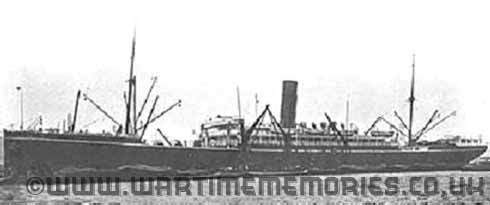
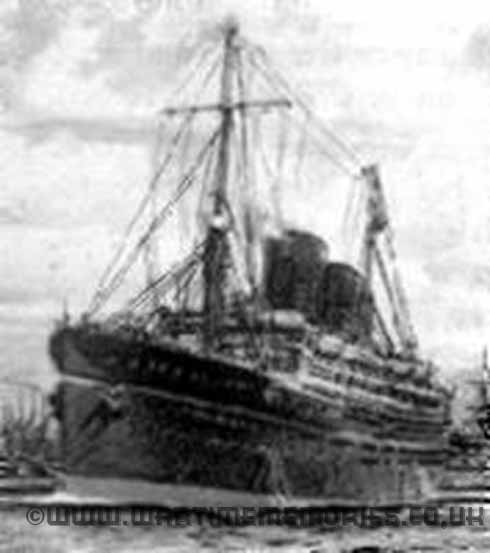
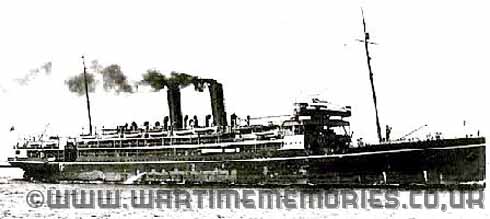
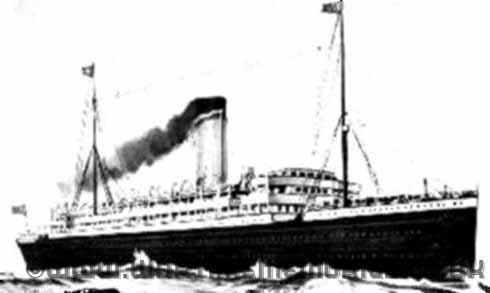

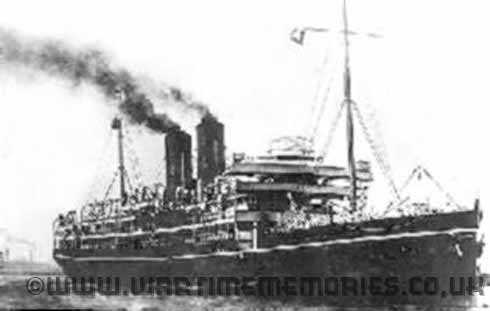
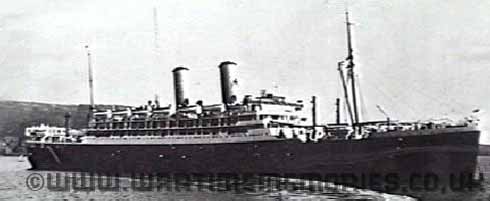
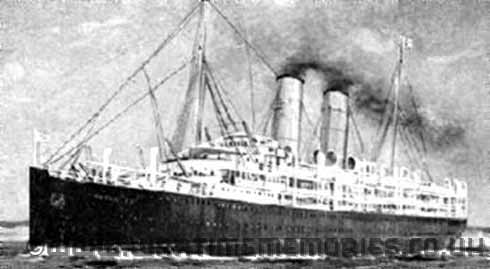
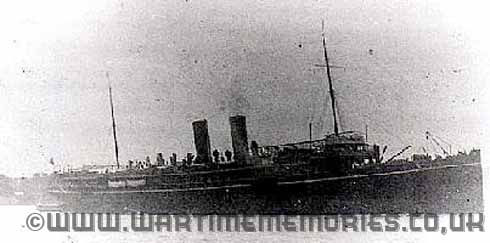
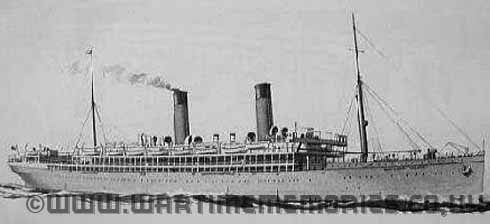
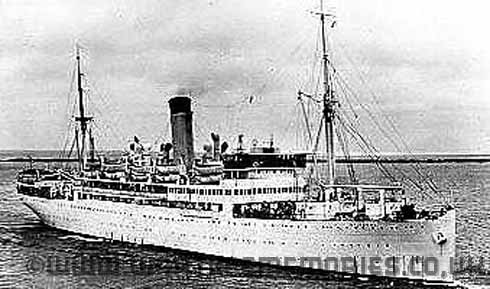
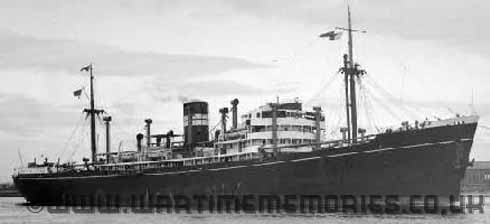
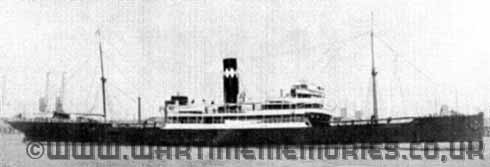
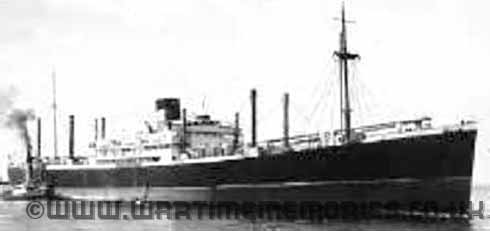
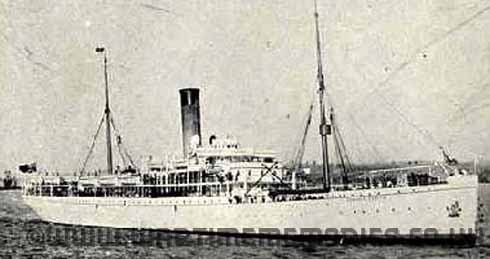
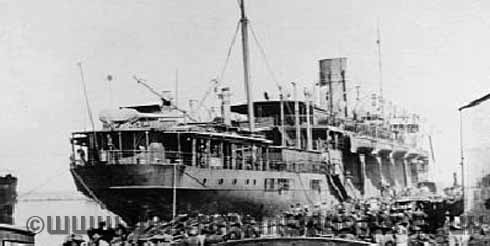
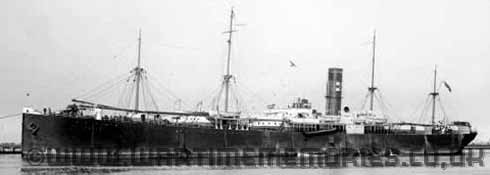
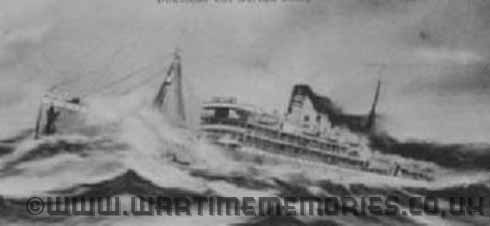
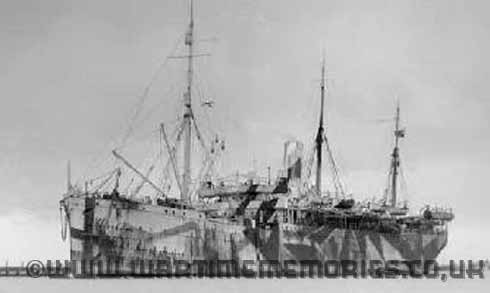
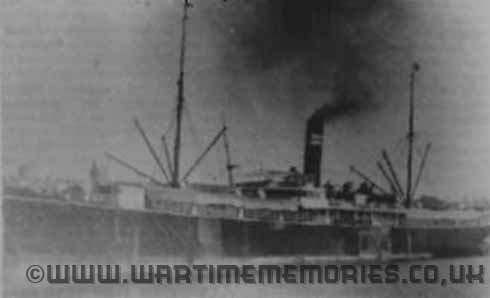

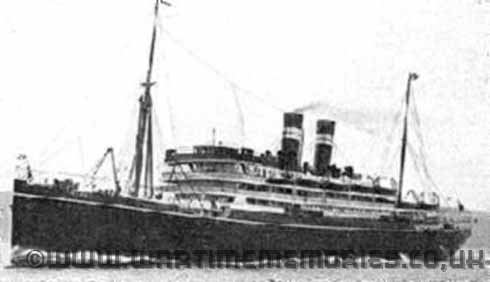
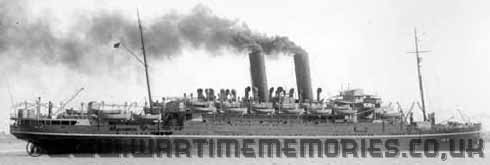
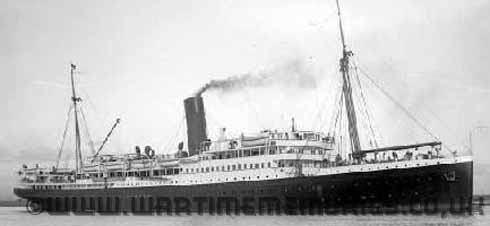
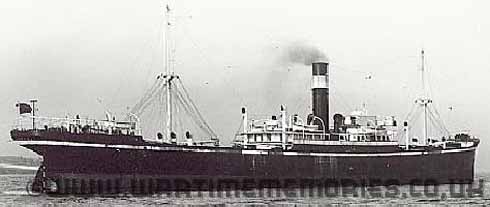
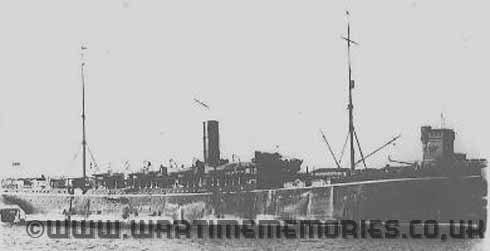
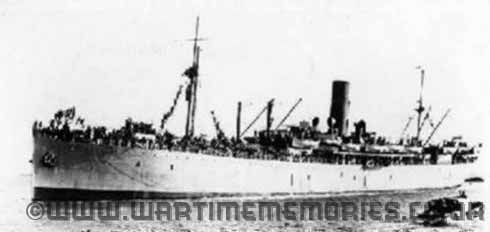

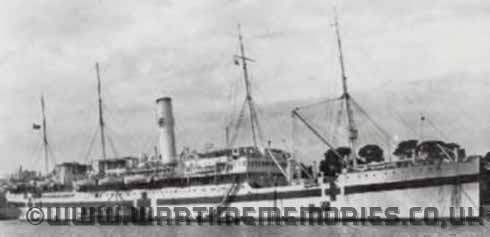
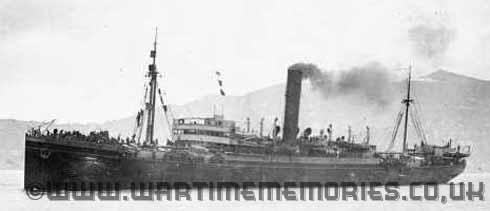
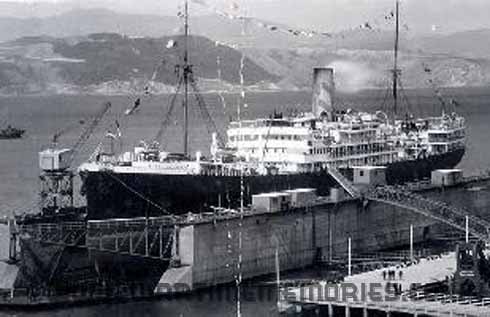
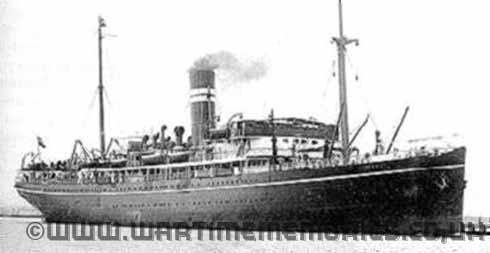
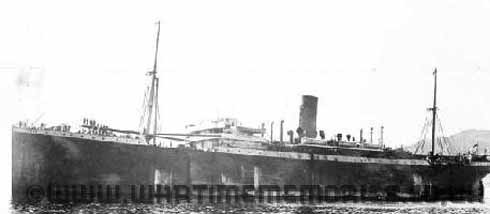
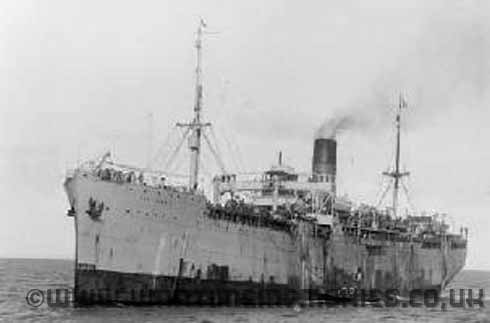
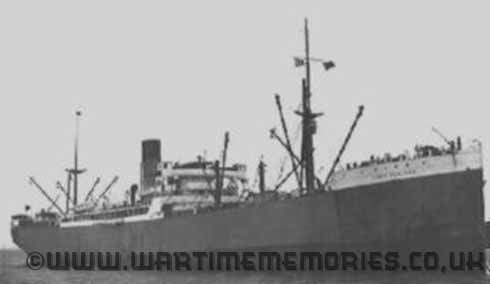
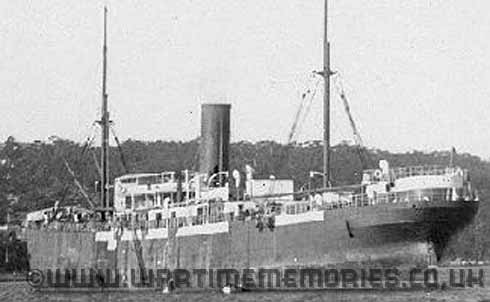
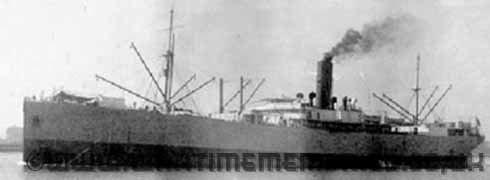
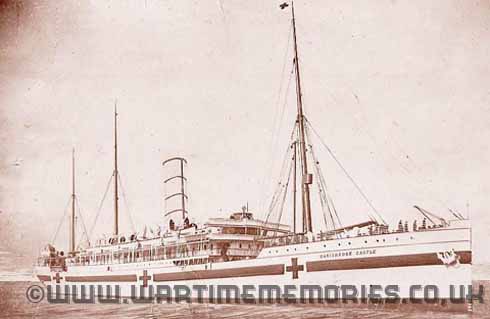
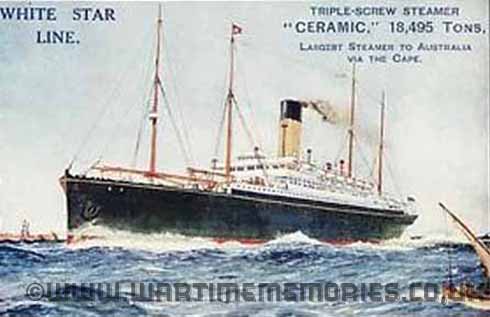
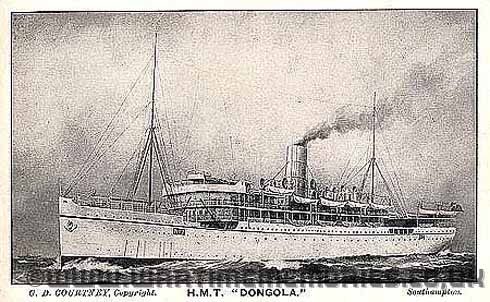
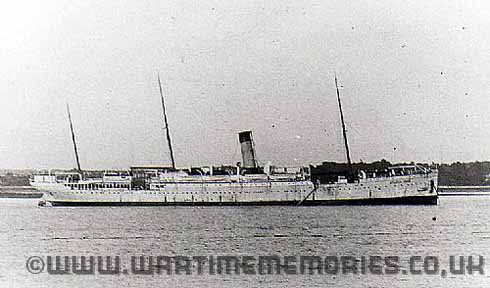
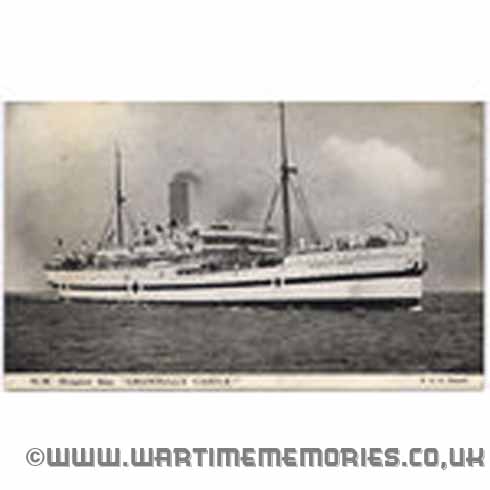
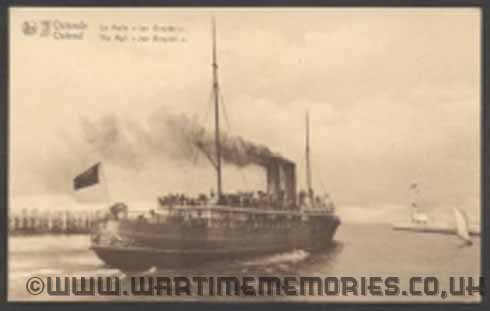
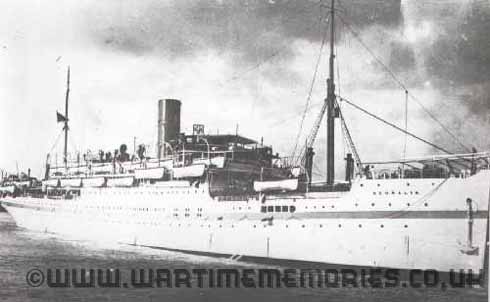
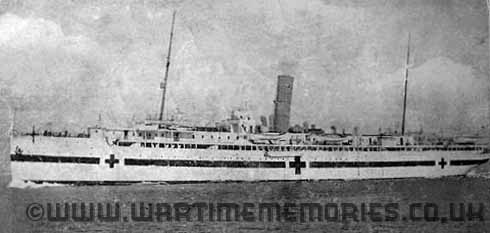
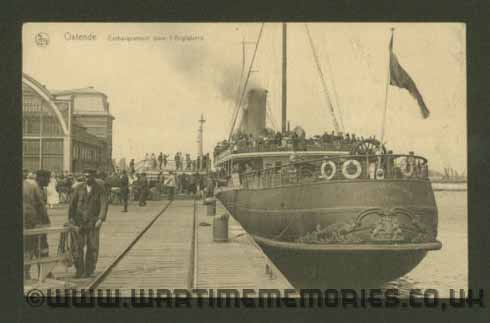
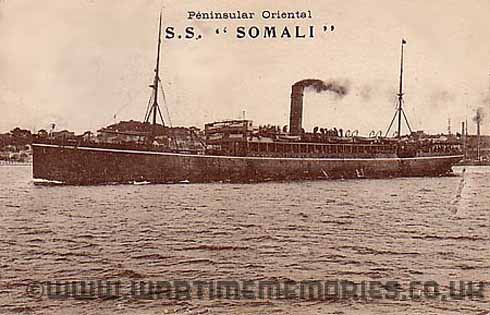
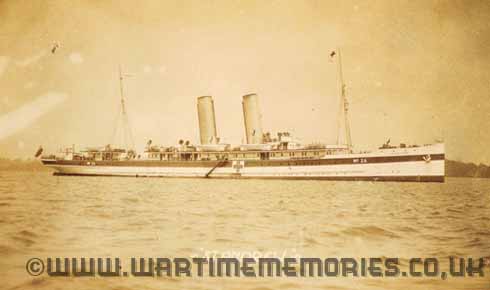
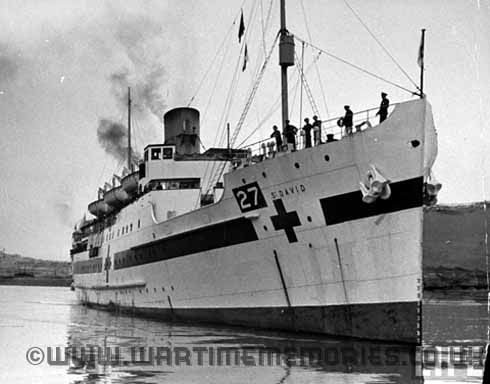
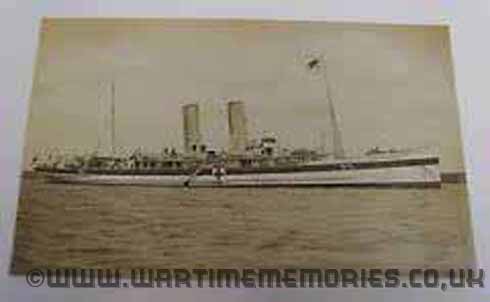
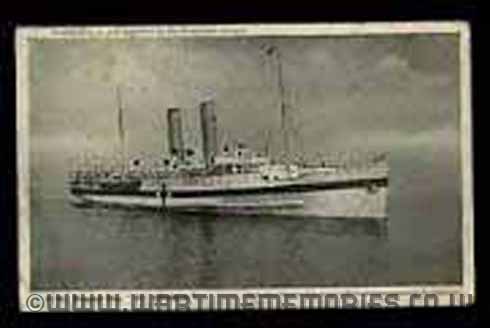
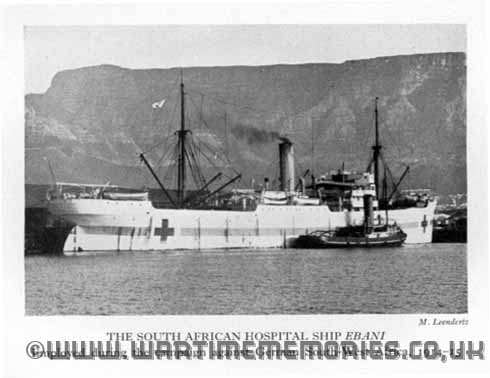
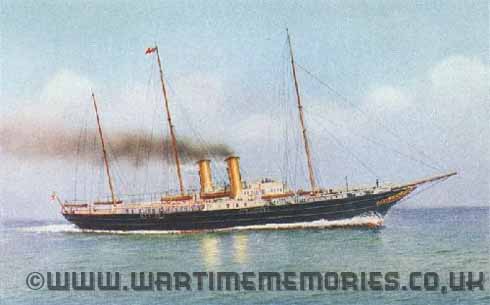
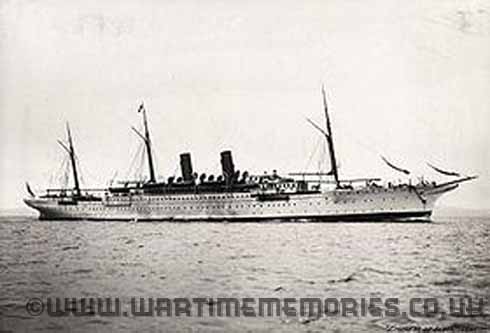
.jpg)
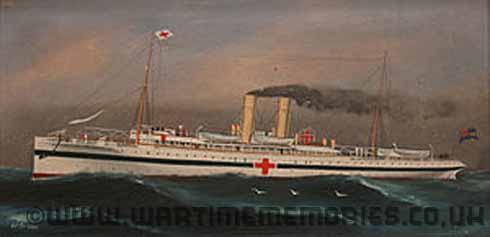
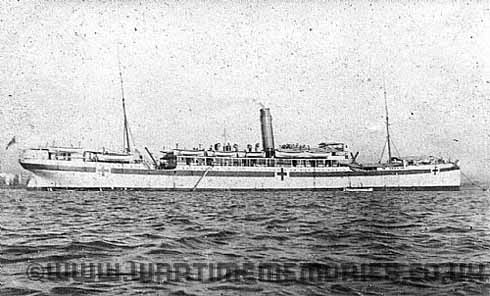
.jpg)
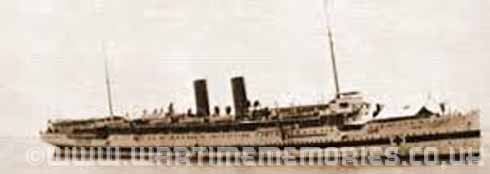
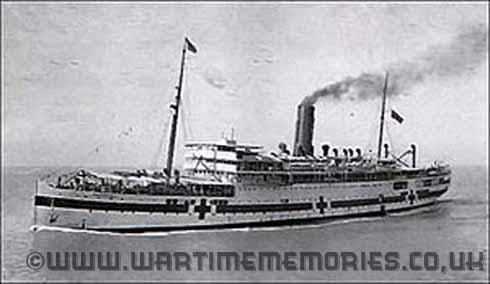
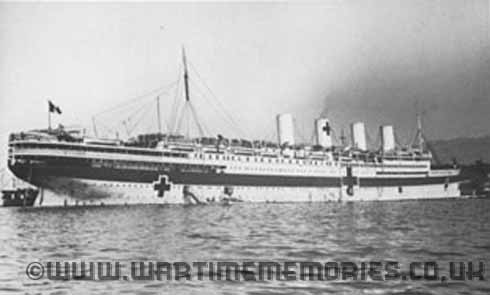
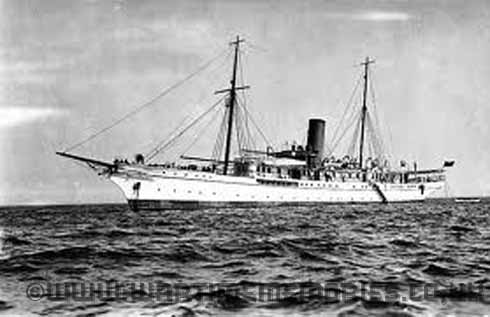
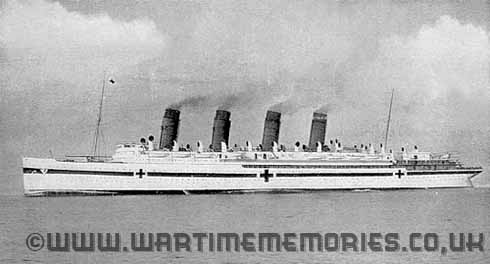
.jpg)
